What are the best plants for hydroponics? With the growing demand for different species of plants around the globe, farmers and biological engineers are implementing the process of hydroponics to grow various types of plants.
Hydroponics refers to horticulture, where plants grow without soil and depends upon chemically composed fertilizers and aqueous solutions.
Providing plants with the right proportion of aqueous fertilizers and other essentials during the process is important.
Hydroponic flowers, vegetables, and herbs are planted in non-reactive mediums for proper processing and growth.
After planting, the hydroponic flowers, vegetables, and herbs are supplied with chemically composed fertilizers through a delivery tube or aerial sprays.
Hydroponics is an engineered technique implemented by many deserted countries and regions to grow crops, flowers, and herbs.
Every part of the world doesn’t experience equal amounts of rainfall, humidity, sunshine, and many other environmental factors directly related to the growth of species of plants.
Hence, farmers and botanists can rely upon hydroponics to mitigate the shortfall of plant varieties and cope with drastically changing environmental conditions across the globe.
Continue reading to find out about the 60 best plants for hydroponics.
60 Best Plants for Hydroponics
- Tarragon
- Peppermint
- Green Mint
- Oregano
- Basil
- Sage
- Stevia
- Lemon Balm
- Rosemary
- Lettuce
- Spinach
- Bok Choy
- Tomatoes
- Peppers
- Cucumber
- Celery
- Devil’s Ivy
- Arrowhead Vine
- Philodendron
- Peace Lily
- Chinese Money Plant
- Female Dragon
- Dumb Cane
- Chinese Evergreen
- Spider Plant
- Strawberries
- Thyme
- Viola
- Watercress
- Watermelon
- Zinnia
- Snapdragon
- Sorrel
- Dahlias
- Dill
- Fiddle-Leaf fig
- Geranium
- Grapes
- Hoya
- Jade
- Kale
- Beans
- Blueberries
- Borage
- Cabbage
- Carnations
- Catnip
- Chamomile
- Chervil
- Orchids
- Petunias
- Radishes
- Rex Begonia
- Inchplant
- Lavender
- Cilantro
- Carrots
- Broccoli
- Lemongrass
- Hydroponic Artichoke
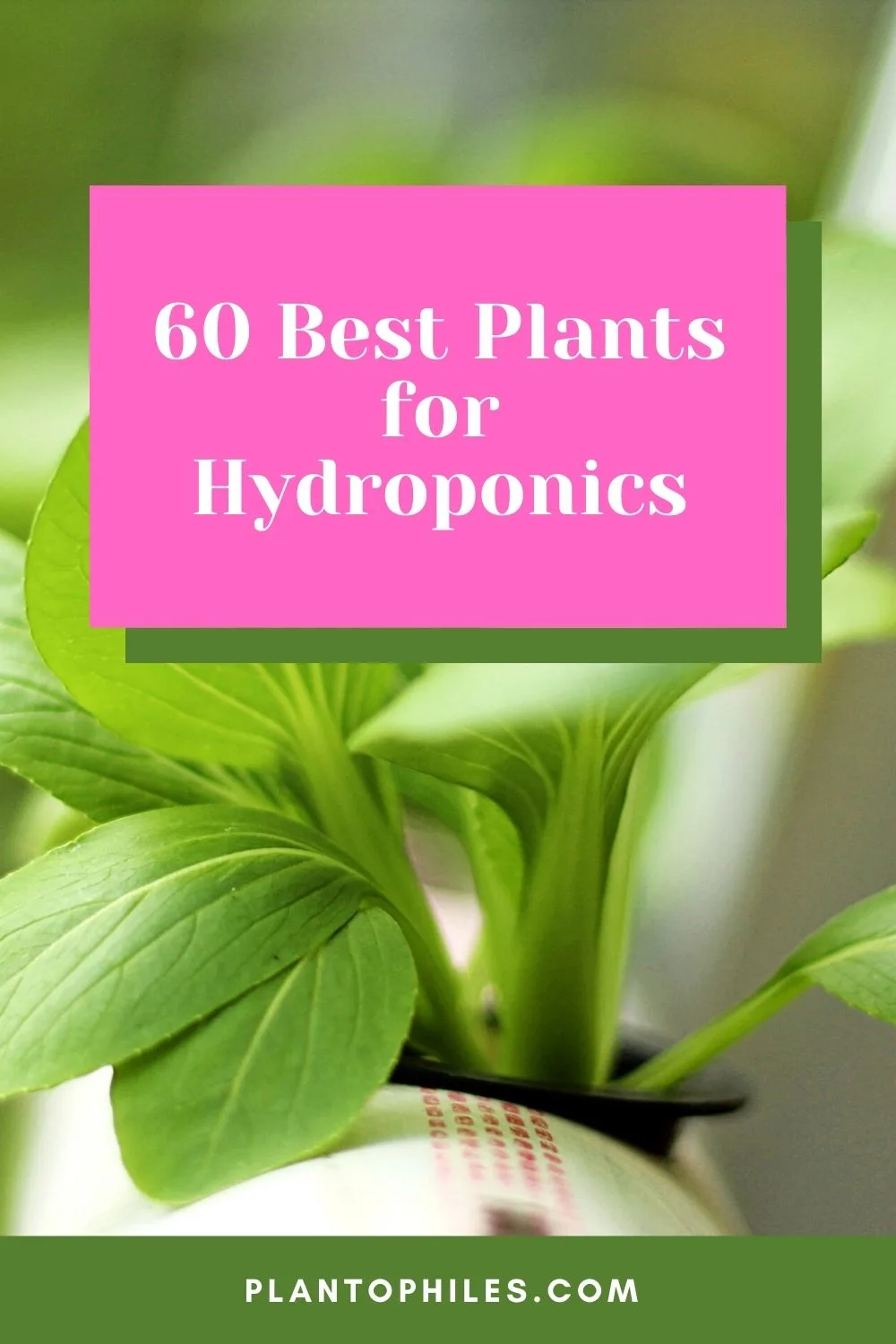
60 Best Plants for Hydroponics
Table of Contents
Best Plants for Hydroponics
1. Tarragon
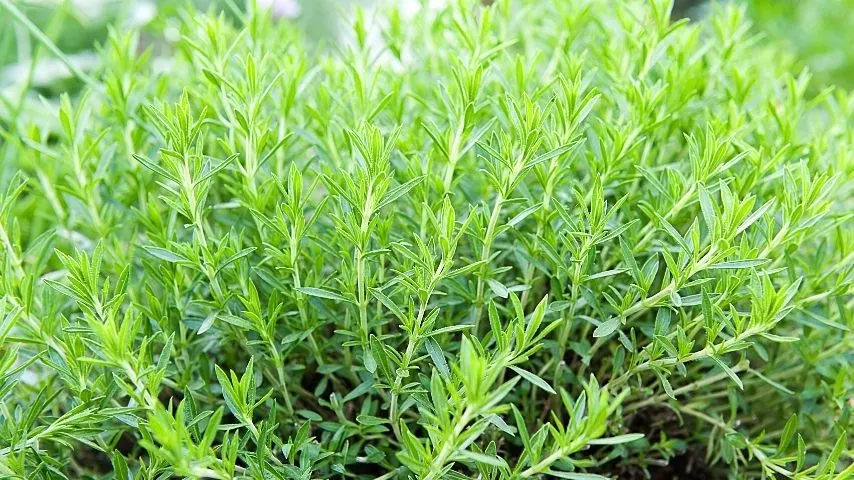
If you’re looking to grow a medicinal plant in your hydroponics garden, Tarragon is one you should include
Tarragon belongs to the Asteraceae family according to the University of Berkeley. It is commonly known as mugwort, a natural herb that is used to make medicines and herbal treatment products.
It has a taste like pungent licorice due to the presence of an organic compound, estragole. Some people say that Tarragon is an ideal substitute for the Rosemary plant due to its strong flavor.
Tarragon is a healthy herb, as it contains antimicrobial agents that prevent the body from various unwanted diseases.
- Scientific name: Artemisia dracunculus
- Family: Daisy family
- Temperature: 64-69°F (18-21°C)
- Fertilizer: 4-18-38 NPK fertilizer
- pH: 6.0-6.5
- Lighting: Fluorescent light
- Growth rate: Medium
- Humidity: 50-70%
2. Peppermint
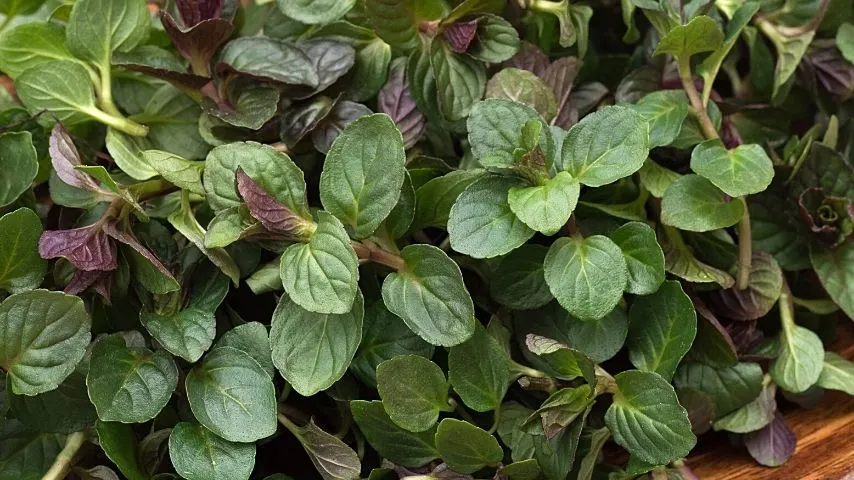
Peppermint, a hybrid of the watermint and spearmint, is another great option to grow in a hydroponics system
Peppermint is a hybrid mint plant, a combination of watermint and spearmint. Peppermint is widely grown across the globe for medical purposes and treatments.
The Peppermint plant is used for making Peppermint oil, which can be applied to sore body parts for pain release.
Peppermint belongs to the mint family but has a slightly sharp and strong flavor in comparison to other mints.
- Scientific name: Mentha × piperita
- Family: Mints
- Temperature: 50-55°F (10-12°C)
- Fertilizer: Fertilizer high in Nitrogen content
- pH: 6.0-7.0
- Lighting: 12-16 hrs. of unobstructed sunlight
- Growth rate: Fast
- Humidity: 70-90%
3. Green Mint
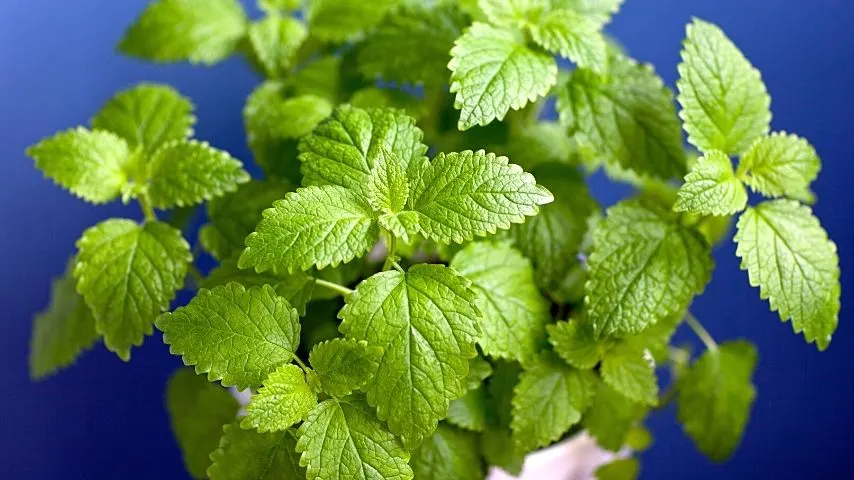
If you were to grow Green Mint in hydroponics, make sure it receives 14-16 hours of light a day
Green Mint contains aromatic herbs which are helpful for the human body and many natural processes.
Green Mint helps overcome irritable bowel syndrome (IBS), helping in the digestion process.
The Green Mint plant requires 14-16 hours of sunlight during the hydroponics.
- Scientific name: Mentha
- Family: Lamiaceae
- Temperature: 50-70°F (10-21°C)
- Fertilizer: Using a foliage based nutrient solution is ideal
- pH: 6.0-7.0
- Lighting: 14-16 hrs. of unobstructed sunlight
- Growth rate: Medium
- Humidity: 40-60% minimum
4. Oregano
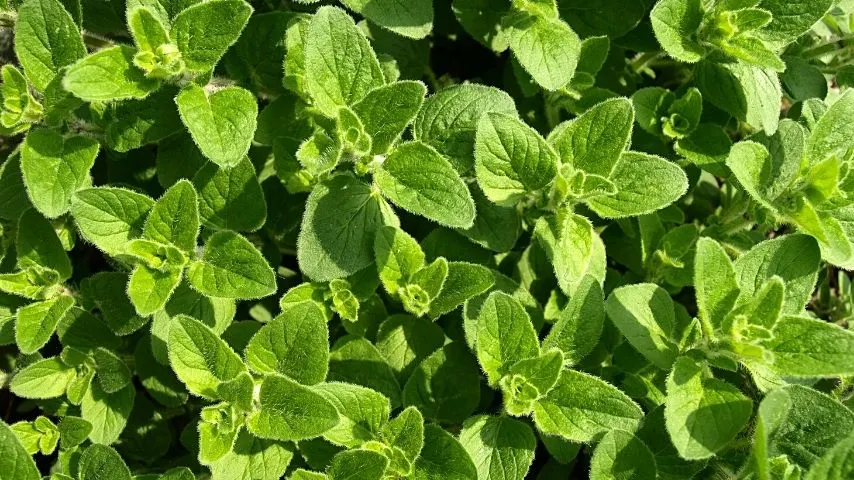
Oregano is one of the best plants to grow in hydroponics as it doesn’t require too much maintenance to thrive in it
Oregano can be grown through hydroponics as they are easy to grow and manage without any complications.
In order to grow Oregano, one can cut the springs from the bottom and place them into hormone powder or aqueous solution.
Oregano is also considered an herb that is commonly used as a flavoring for cooking dishes and meals.
- Scientific name: Origanum vulgare
- Family: Mints
- Temperature: 50-70°F (10-21°C)
- Fertilizer: 111-62-66 NPK fertilizer
- pH: 6.0-8.0
- Lighting: Full sunlight or standard fluorescent light
- Growth rate: Medium
- Humidity: 85% minimum
5. Basil
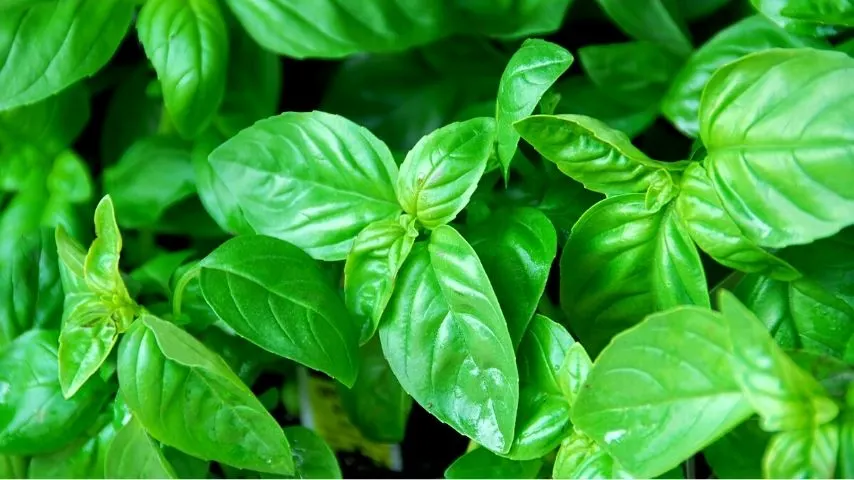
Like the green mint, you need to expose Basil to 14 hours of light a day to thrive in a hydroponics system
In order to grow Basil with hydroponics, one has to provide it with an ample amount of light.
Basil requires at least 14 hours of light every day when grown in a controlled environment.
Talking about hydroponic production, Basil is among the easiest to grow and favorite crops of farmers and hobbyists.
Aroma 2, Genovese, and Prospera are among the top varieties of Basil that grow fast by hydroponics.
- Scientific name: Ocimum basilicum
- Family: Mints
- Temperature: 65–70°F (18–21°C)
- Fertilizer: A combination of perlite and vermiculite is ideal
- pH: 5.8–6.2
- Lighting: 14 hrs. of direct sunlight
- Growth rate: Slow or moderate
- Humidity: Above 70%
6. Sage
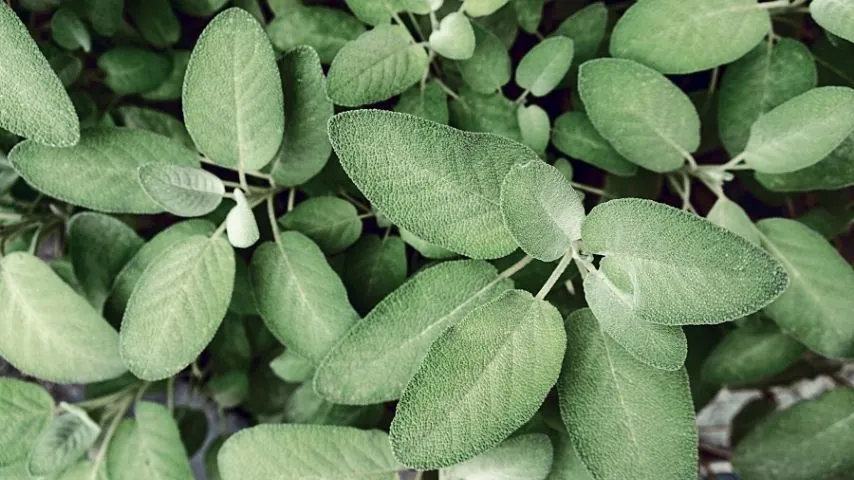
Sage requires 12-14 hours of sunlight exposure for it to grow properly in a hydroponics system
A hydroponic sage requires about 12-14 hours of sunlight daily, and if you are growing Sage indoors, the use of grow lights is strongly recommended.
For hydroponic Sage, one must ensure its pH levels and other nutrient systems. You can also grow White Sage with hydroponics.
- Scientific name: Salvia officinalis
- Family: Mints
- Temperature: 75-85°F (23-29°C)
- Fertilizer: Phosphates, Nitrates, and Sulfates
- pH: 5.5-6.0
- Lighting: Use grow lights
- Growth rate: Slow
- Humidity: 30-50%
7. Stevia
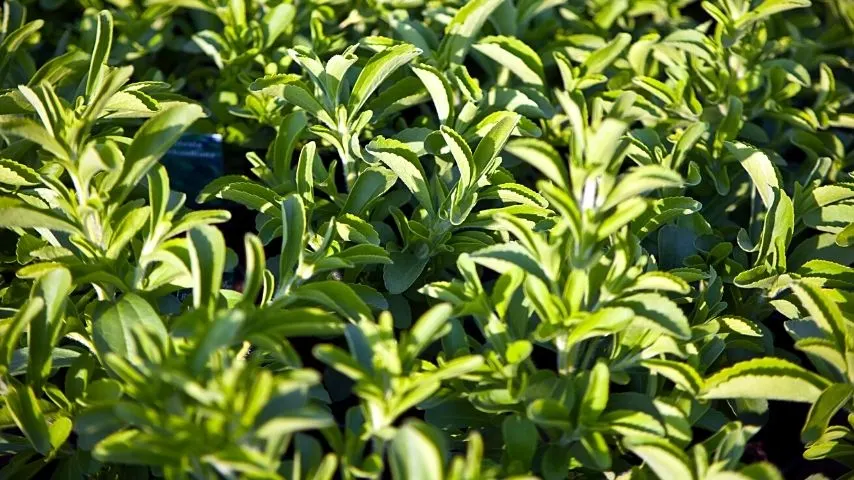
Another easy-to-grow plant in the hydroponics system is Stevia
Stevia is quite easy to grow and maintain in a hydroponic system. One can use DIY knowledge and other basics for growing Stevia.
If you are growing Stevia on a large scale for commercial purposes, then it’s recommended to implement the Nutrient Film Technique (NFT).
- Scientific name: Stevia rebaudiana
- Family: Daisy family
- Temperature: 59-78°F (15-25°C)
- Fertilizer: 103-41-168 NPK fertilizer
- pH: 6-6.5
- Lighting: 3 hrs. of sunlight or LED grow light
- Growth rate: Medium
- Humidity: Medium
8. Lemon Balm
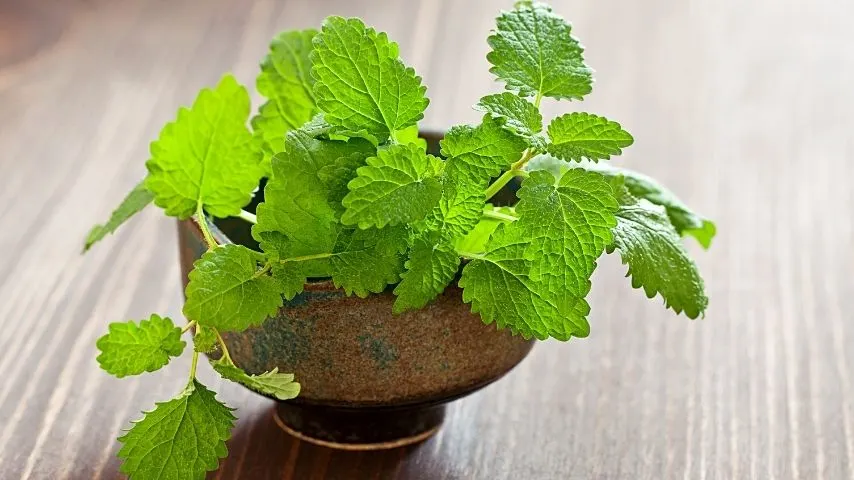
Lemon Balm will grow in a hydroponics system whether indoors or outdoors if it’s provided with the right growing conditions
Lemon Balm can be grown in a hydroponics system if provided with sufficient minerals, nutrients, and growing conditions.
Lemon Balm prefers staying in warm climates and can be grown indoors and outdoors, depending on hydroponic or natural systems.
- Scientific name: Stevia Melissa officinalis
- Family: Mints
- Temperature: 65-80°F (18-26°C)
- Fertilizer: 19-19-19 NPK fertilizer
- pH: 6-7.5
- Lighting: Sunlight or LED grow light
- Growth rate: Medium
- Humidity: Cold climate is preferred
9. Rosemary
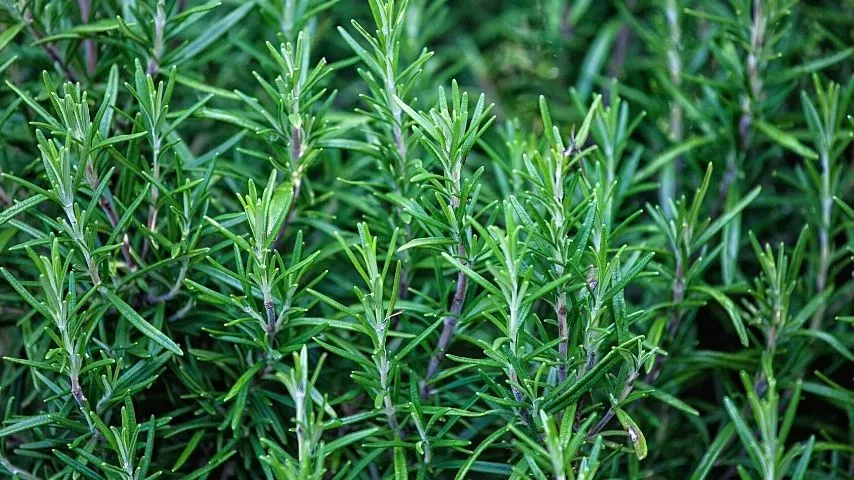
Rosemary can be grown in a hydroponics system using sterile roots cubes
Rosemary is classified as a perennial evergreen shrub that can be grown hydroponically.
Sterile roots cubes can be used for growing Rosemary in a hydroponics setup; however, it’s recommended to cut fresh so stems can easily diffuse in the water.
- Scientific name: Salvia rosmarinus
- Family: Mints
- Temperature: 65°F (18°C)
- Fertilizer: NPK fertilizers
- pH: 5.5-7.0
- Lighting: Basking under lights for at least 11 hrs. daily
- Growth rate: Fast
- Humidity: 30-50%
10. Lettuce
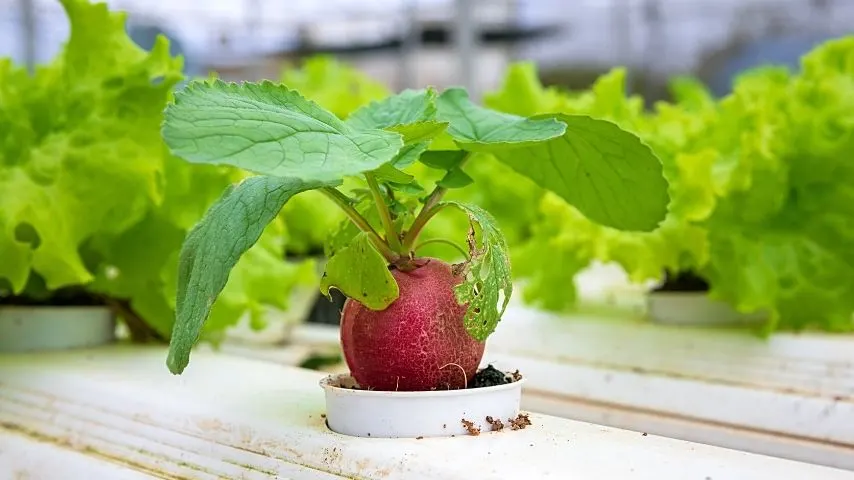
Lettuce is one of the most common plants to be grown in a hydroponics system
Lettuce is among the most widely grown vegetable by hydroponics. For growing lettuces, applying nutrient solutions is crucial in the right proportion.
Lettuce might take 6-8 weeks to be completely ready via the hydroponic process.
- Scientific name: Lactuca sativa
- Family: Daisy family
- Temperature: 68-75°F (18-22°C)
- Fertilizer: Phosphorus, Magnesium, Potassium, Calcium, and Nitrogen-based fertilizers
- pH: 6.0-7.0
- Lighting: Adding supplementary LED light is recommended
- Growth rate: Fast
- Humidity: 50-70%
11. Spinach
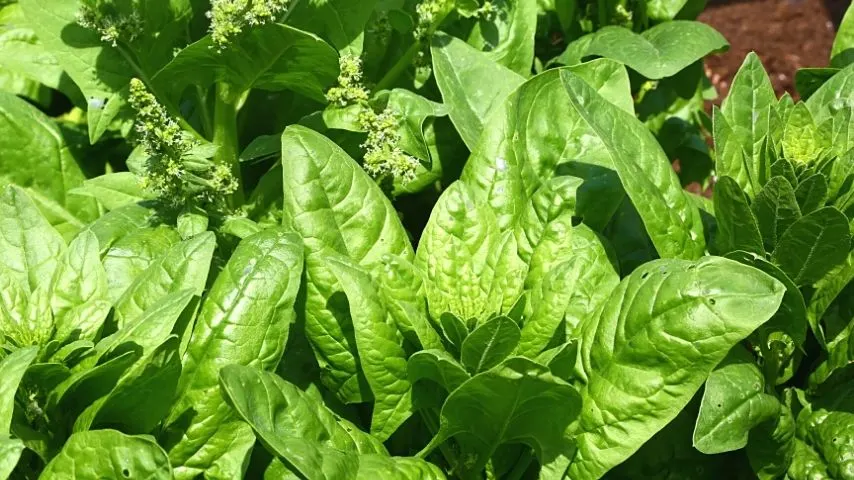
To plant Spinach in a hydroponics system, make sure to sow 4-5 fresh seeds per container
Spinach is widely grown with hydroponics to cater to the need of individuals and vegetarians. While growing hydroponic Spinach, one should use fresh seeds and sow four to five seeds per container or hole.
Seeds turn into a plant in about one to three weeks, depending upon the external conditions.
- Scientific name: Spinacia oleracea
- Family: Amaranthaceae
- Temperature: 60-75°F (15-22°C)
- Fertilizer: Calcium and Magnesium based fertilizer
- pH: 5.6-6.0
- Lighting: Direct sunlight or fluorescent lighting
- Growth rate: Fast
- Humidity: 40-70%
12. Bok Choy
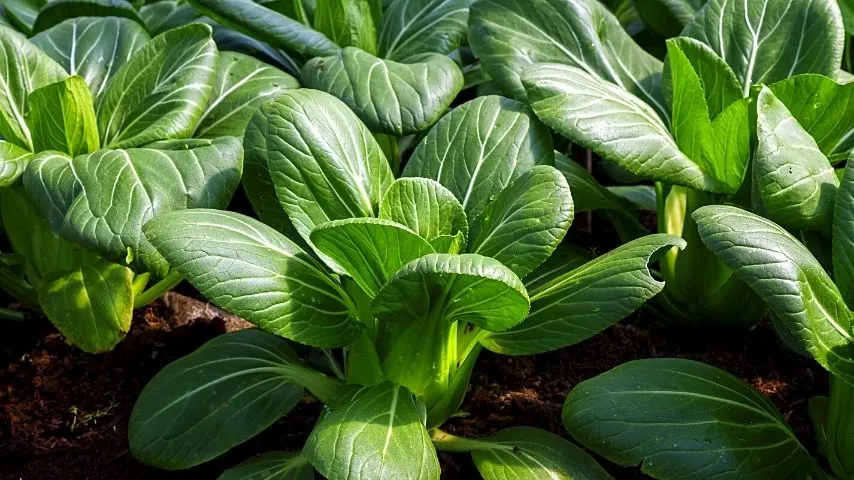
Bok Choy can be harvested after 30 days when you grow it in hydroponics
Bok Choy is an edible plant that is usually cooked in various dishes.
Bok Choy is commercially grown hydroponically and can be harvested within 30 days if provided the best optimum conditions.
- Scientific name: Brassica rapa subsp. chinensis
- Family: cabbage family
- Temperature: 55-75°F (13-24°C)
- Fertilizer: OF and OF2 may be applied
- pH: 5.5-6.5
- Lighting: 6-7 hrs. of light daily
- Growth rate: Fast
13. Tomatoes
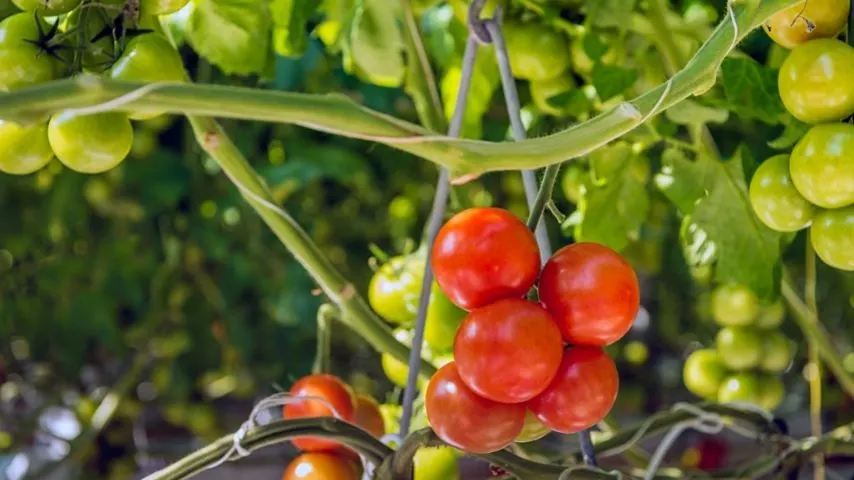
Tomatoes can be grown in a hydroponics system with the help of Rockwool cubes
Hydroponic Tomatoes can be tricky to grow if you are a newbie. Using Rockwool cubes for germinating tomato seeds in the hydroponic system is recommended.
The seeds embedded in Rockwool cubes would require a moist and warm environment to grow and sprout.
- Scientific name: Solanum Lycopersicum
- Family: Solanaceae
- Temperature: 60-65°F (15-18°C)
- Fertilizer: Calcium, Nitrate, Sulphate, and Chloride based fertilizers can be added
- pH: 5.8-6.3
- Lighting: 8-10 hrs. of direct sunlight or grow lights.
- Growth rate: Fast
- Humidity: 65-80%
14. Peppers
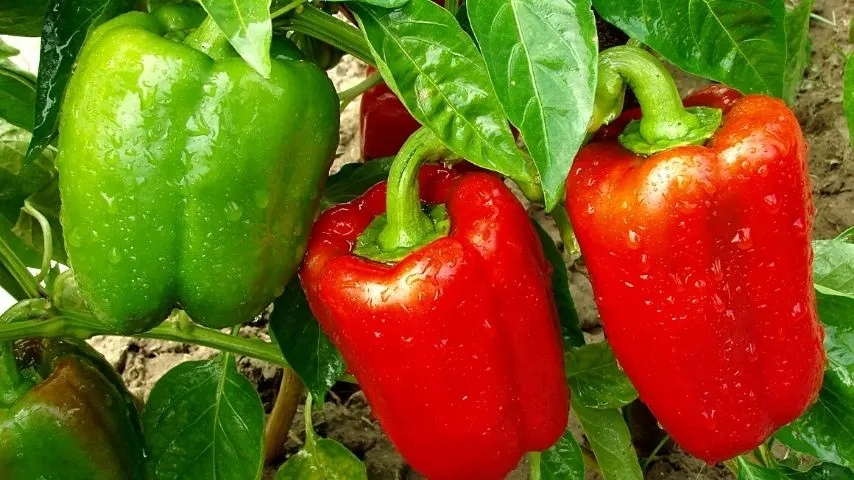
Peppers need to be planted 9 inches from each other if they’re to thrive in a hydroponics system
Peppers are available in various varieties, and their growth rate depends upon the hydroponic system.
It’s recommended to grow them at a spacing of 9 inches due to their spreading lamina and roots in the system.
One might have to provide 10-12 hours of uninterrupted light for uniform growth and development of the plant.
- Scientific name: Capsicum annuum Group
- Family: Nightshade
- Temperature: 73-78°F (22-26°C)
- Fertilizer: 8-8-8 liquid nutrient solution would work best
- pH: 5.5-7.0
- Lighting: 10-12 hrs. of grow lights.
- Growth rate: Fast
- Humidity: 55-65%
15. Cucumber
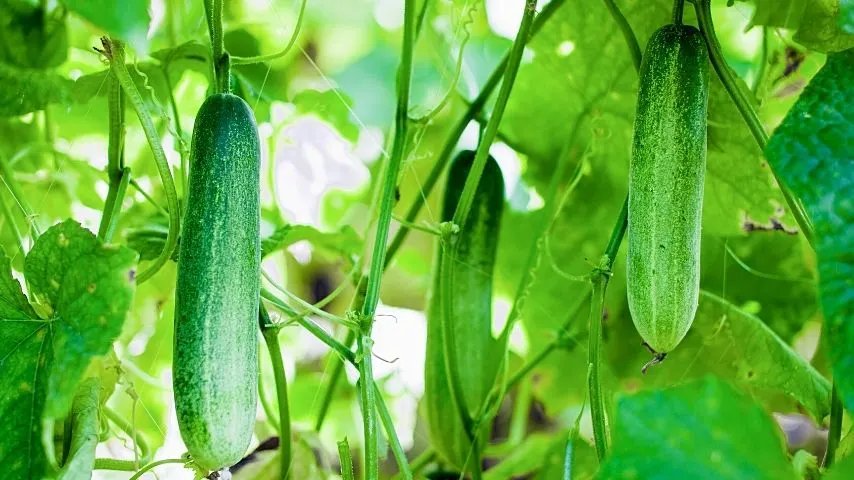
Cucumber’s growth rate accelerates when you grow it in a hydroponics system
Cucumber is among the few widely cultivated wine plant known as cylindrical fruit or vegetable to a layperson.
Cucumber is the favorite veggie of vegetarians, and hence, that’s the reason why it has such high demand.
Cucumbers enjoy growing in a hydroponic environment as the growth rate accelerates, developing the best-ripened end product.
- Scientific name: Cucumis sativus
- Family: Cucurbits
- Temperature: 75-85°F (23-29°C)
- Fertilizer: Hydroponic NPK fertilizer in the ratio 10-8-22
- pH: 5.5-6.0
- Lighting: Warm light
- Growth rate: Fast
- Humidity: Above 75%
16. Celery
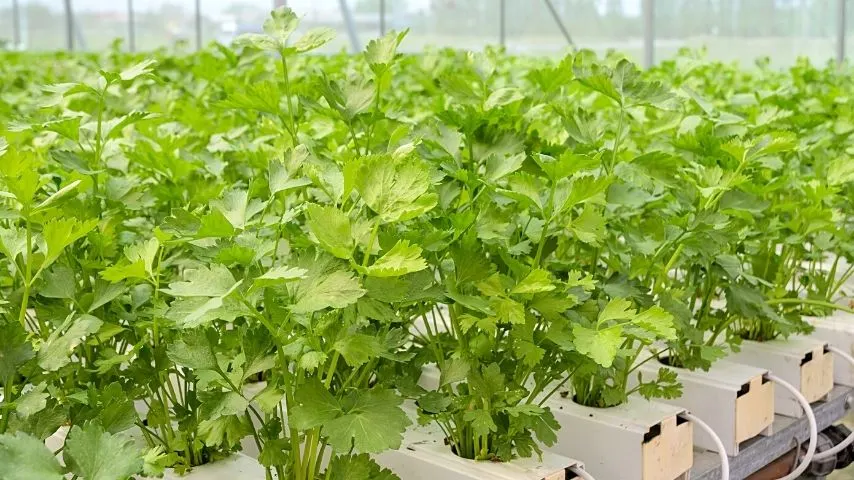
Celery is a water-hungry plant, making it a good candidate to grow in a hydroponics system
Celery is a water-fed plantation that requires high volumes of water.
To maintain the rich water supply, Celery is grown under hydroponics, as one wouldn’t have to depend upon rainfall or irrigation all year long.
It’s suggested to tie developing celery stalks together, preventing them from sprawling out.
- Scientific name: Apium graveolens
- Family: Umbellifers
- Temperature: 60-75°F (15-23°C)
- Fertilizer: Add Calcium, Magnesium, and Humic acid for overall strength
- pH: 6.3-6.7
- Lighting: Mild light for 6 hrs. per day
- Growth rate: Fast
- Humidity: 90%
17. Devil’s Ivy
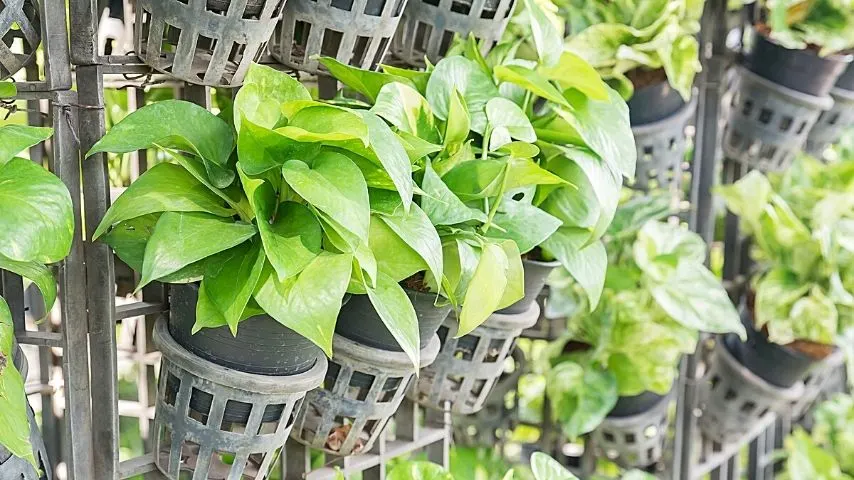
Devil’s Ivy can be grown indoors using the hydroponics system
Devil’s Ivy, commonly referred to as Pothos, is grown indoors using hydroponics techniques.
Pothos is an easy-to-maintain plant, which can grow up to 10ft if provided with the best nutrients and water-based solutions.
Many hobbyists prefer keeping Pothos in waterfilled cans and containers, as Pothos enjoy surviving in water all day long.
Pothos are said to thrive for up to ten years, depending on the environment and other conditions.
- Scientific name: Epipremnum aureum
- Family: Arums
- Temperature: 80-85°F (26-29°C)
- Fertilizer: Liquid fertilizers if required
- pH: 4.0-8.0
- Lighting: Bright sunlight
- Growth rate: Fast
- Humidity: 50-80%
18. Arrowhead Vine
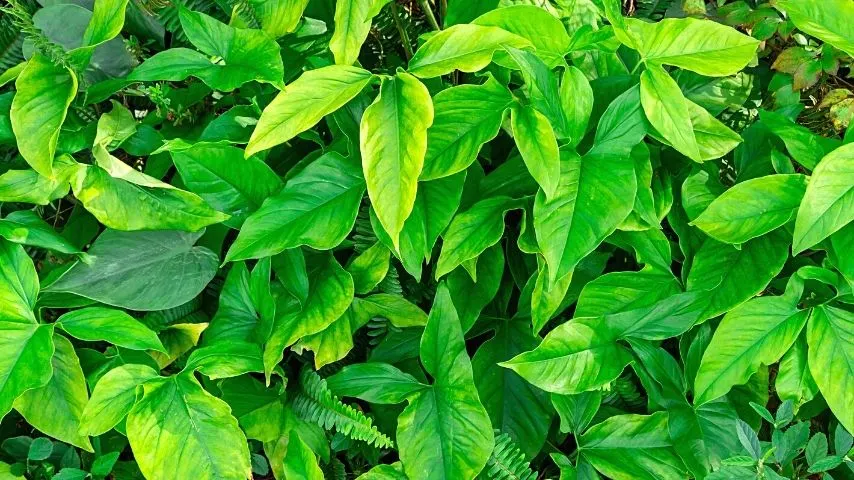
Arrowhead Vine is a tropical plant that can thrive when grown in a hydroponics system
Arrowhead Vine is a good example of a tropical plant, as they have the ability to grow and thrive underwater. The long roots system of Arrowhead Wine can be observed from a transparent container.
This is the main reason why Arrowhead Wines are always kept in round bottom flasks and jars filled with water.
- Scientific name: Syngonium podophyllum
- Family: Arums
- Temperature: 59-86°F (15-30°C)
- Fertilizer: Liquid fertilizers containing ferrous sulfate solution
- pH: 5.5-6.0
- Lighting: Cool or fluorescent lights
- Growth rate: Fast
- Humidity: Around 50%
19. Philodendron
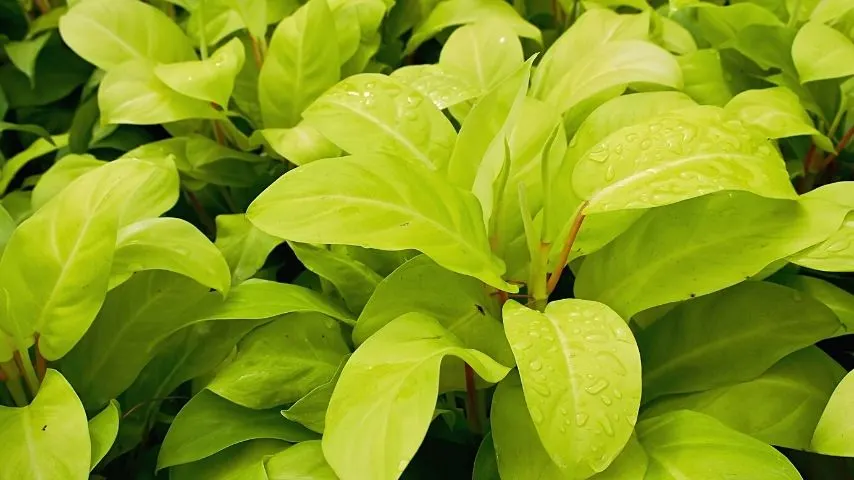
Philodendron can be grown both in soil and in a hydroponics system so long as the right growing conditions are provided
Philodendron can be grown in soil or water depending on soil and other environmental conditions.
Philodendron shows signs as it grows; the production of yellow leaves indicates over-watering; however, brown leaves indicate under-watering.
After Philodendron attains a stable condition, it can be kept in self-watering pots. Philodendrons are easy to grow and maintain throughout the process.
- Scientific name: Philodendron
- Family: Arums
- Temperature: 65-85°F (18-29°C)
- Fertilizer: 20-20-20 balanced fertilizer
- pH: 5.5-6.5
- Lighting: Full spectrum grow light is recommended
- Growth rate: Fast
- Humidity: Around 50-60%
20. Peace Lily
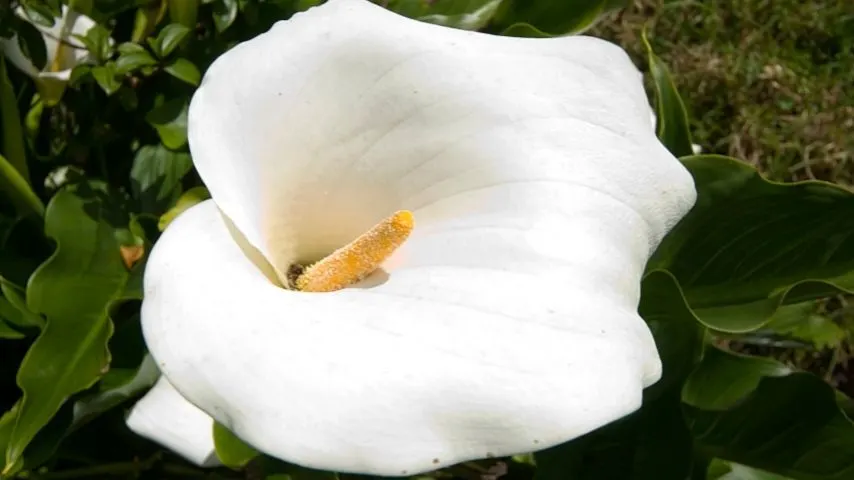
You can grow Peace Lily in hydroponics as you don’t need subgrades or organic soil to make it thrive
Peace Lily is grown in water without using any organic soil or subgrades. Small river stones or artificially curated flasks can be used to hold Peace Lily at a certain water level.
Peace Lily can be grown using hydroponics; however, it’s required to monitor its growth and water quality continuously.
- Scientific name: Spathiphyllum
- Family: Arums
- Temperature: 68-80°F (20-27°C)
- Fertilizer: 20-20-20 water-soluble fertilizer is sufficient
- pH: 5.6-6.5
- Lighting: Shade or partial shade
- Growth rate: Fast
- Humidity: Around 80%
21. Chinese Money Plant
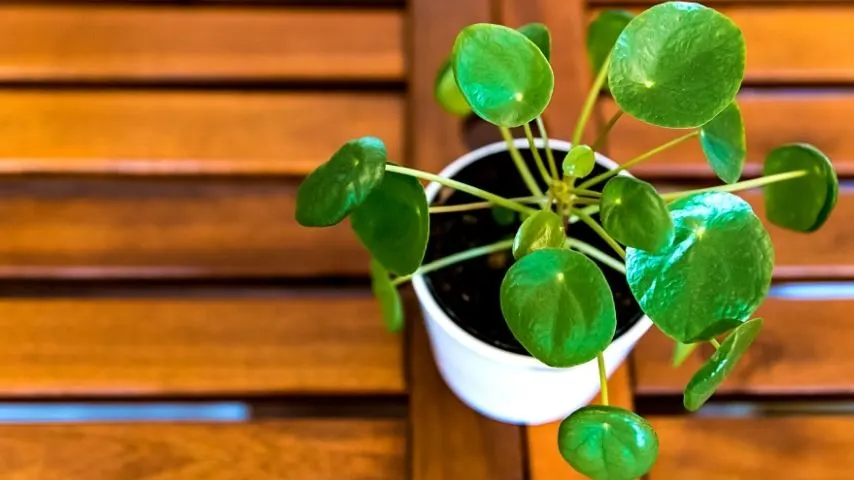
Chinese Money Plant can be grown in a hydroponics system through its rhizome
The rhizome or stem of the Chinese Money Plant can be propagated in water. Various varieties of Money Plant can be grown hydroponically, depending upon the conditions provided to the system.
During hydroponics, Money Plant absorbs nitrates via roots from water, developing itself firmly.
- Scientific name: Pilea peperomioides
- Family: Urticaceae
- Temperature: 59-86°F (15-30°C)
- Fertilizer: Liquid-based fertilizers
- pH: 6.9-7.1
- Lighting: Artificial light would be sufficient
- Growth rate: Fast
- Humidity: 55-65%
22. Female Dragon
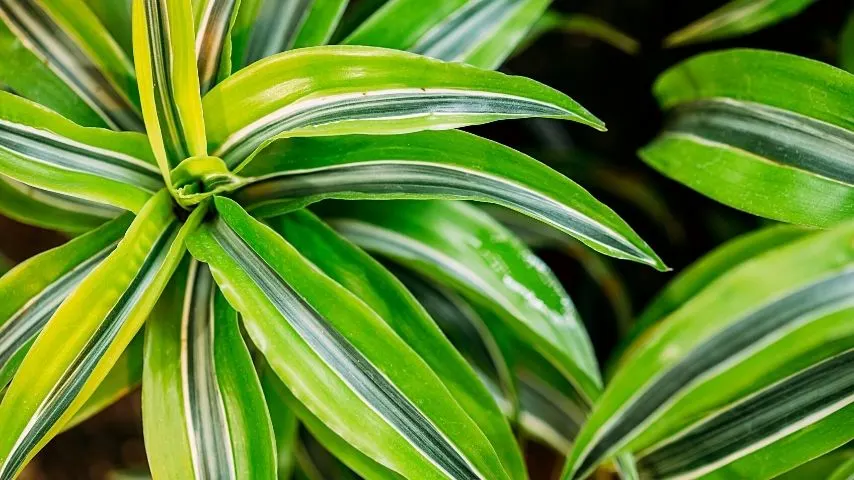
Female Dragon can be grown in various areas of the world if you use the hydroponics system
The female Dragon is commonly known as the Magnolia flower as it belongs to the Magnolia family.
The Female hydroponic Dragon might cost one a fortune, but it’s a quite reliable and fast process.
- Scientific name: Dracaena
- Family: Asparagaceae
- Temperature: 68-86°F (20-30°C)
- Fertilizer: Liquid-based fertilizers
- pH: 5.5-6.0
- Lighting: 8-12 hrs. of light
- Growth rate: Fast
- Humidity: About 75%
23. Dumb Cane
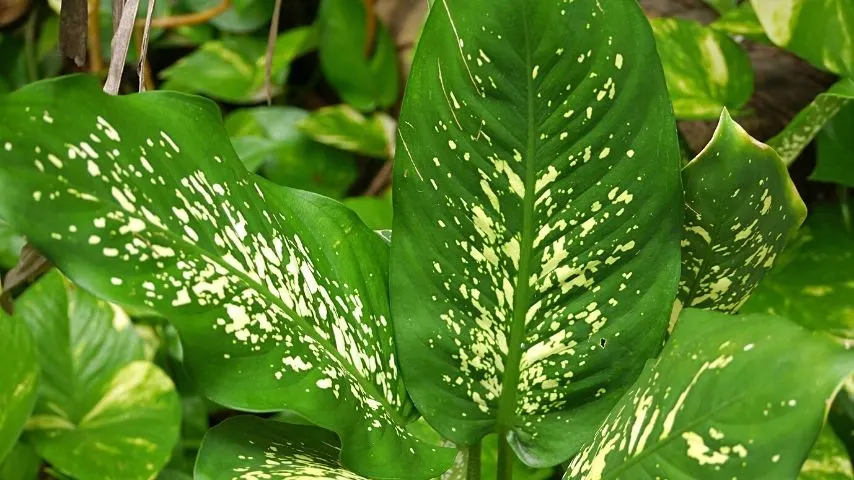
Dumb Cane can be grown in a hydroponics system, but make sure to maintain the water levels properly
Dumb Cane is grown hydroponically in many regions around the world; however, there’s a striking difference in the height of the Dumb Cane grown in soil and hydroponics.
Dumb Cane’s overall growth and health can get compromised if its water levels aren’t maintained.
While growing in hydroponics, one doesn’t need to worry about overwatering and other environmental factors.
- Scientific name: Dieffenbachia
- Family: Arums
- Temperature: 60-80°F (15-26°C)
- Fertilizer: Houseplant fertilizer
- pH: 6.5-7.0
- Lighting: 8-12 hrs. of light
- Growth rate: Moderate
- Humidity: Average
24. Chinese Evergreen
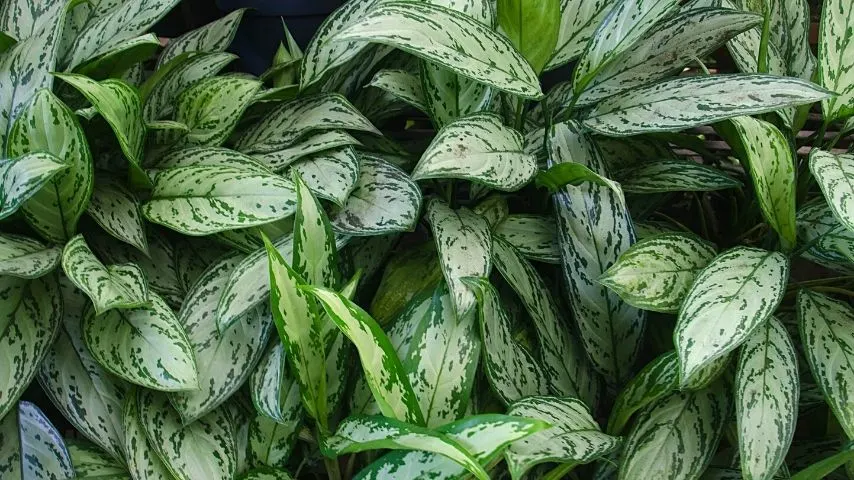
You need to recharge Chinese Evergreen with circulating air and moisture particles for it to thrive in a hydroponics system
Chinese Evergreen is among the most abundant house plants, which can adapt to various environmental changes around them.
Chinese Evergreen can thrive in shaded or low light conditions, making it an ideal pick for indoor environments.
While growing in a hydroponic system, Chinese Evergreen needs to be recharged with circulating air and moisture particles.
- Scientific name: Aglaonema
- Family: Arums
- Temperature: 60-85°F (15-29°C)
- Fertilizer: Liquid houseplant fertilizer
- pH: 5.5-6.5
- Lighting: A little exposure to artificial light
- Growth rate: Fast
- Humidity: 60-70%
25. Spider Plant
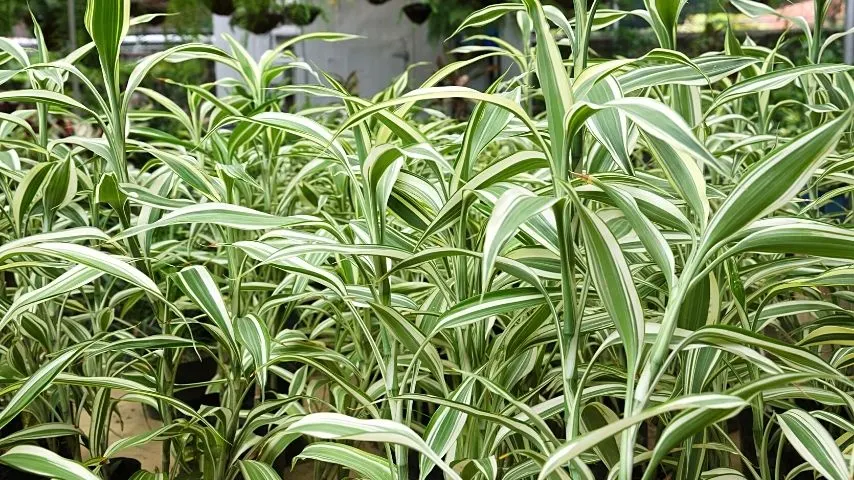
Spider Plant is one of the best plants to grow in hydroponics as it can easily thrive in it
Spider Plant is also known as Chlorophytum comosum, which is an ideal houseplant. Spider Plant is one of the plants that you can easily maintain and grow without any complications.
Spider Plant only gets adapted to water when emersed or grown in a hydroponic solution.
After little growth, gardeners can transplant the hydroponic Spider Plant into organic soil.
- Scientific name: Chlorophytum comosum
- Family: Asparagus family
- Temperature: 55-80°F (13-27°C)
- Fertilizer: No special fertilization is required
- pH: 6.0-6.5
- Lighting: Grow lighting or moderate natural light
- Growth rate: Fast
- Humidity: 45-85%
26. Strawberries
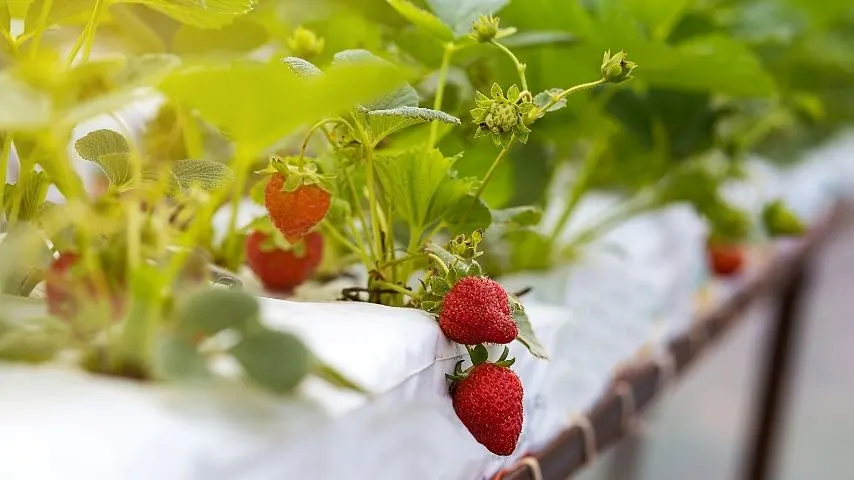
Strawberries need the optimum water and nutrient levels it needs for it to thrive in hydroponics
Strawberries can be grown via hydroponics, and they are as delicious as the ones grown in soil.
Commercial to in-house hydroponic Strawberries can be grown depending upon space and other requirements.
In order to produce juicy, unblemished, and plump Strawberries, one needs to provide optimum water and nutrients.
- Scientific name: Fragaria × ananassa
- Family: Rose family
- Temperature: 70-75°F (21-24°C)
- Fertilizer: NPK fertilizers would be sufficient
- pH: 5.5-6
- Lighting: 8-12 hrs. of sunlight daily
- Growth rate: Medium
- Humidity: 60-75%
27. Thyme
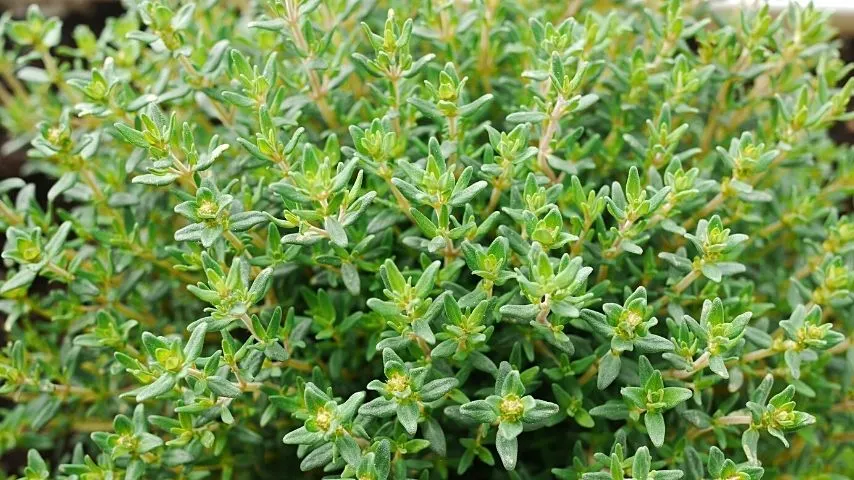
You need to immerse Thyme in at least 2ft of water if you want it to thrive in a hydroponics system
Thyme plant is adapted to be kept in pots or containers having at least 2ft of water. The roots of the Thyme plant need to be partially emersed in water from the day of the plantation.
In a hydroponic system, one could see nominal growth in four to six weeks.
- Scientific name: Thymus vulgaris
- Family: Mints
- Temperature: 65-80°F (18-27°C)
- Fertilizer: Nutrient solutions would be sufficient
- pH: 5.5-7.0
- Lighting: Bright artificial light
- Growth rate: Medium
- Humidity: 75-85%
28. Viola
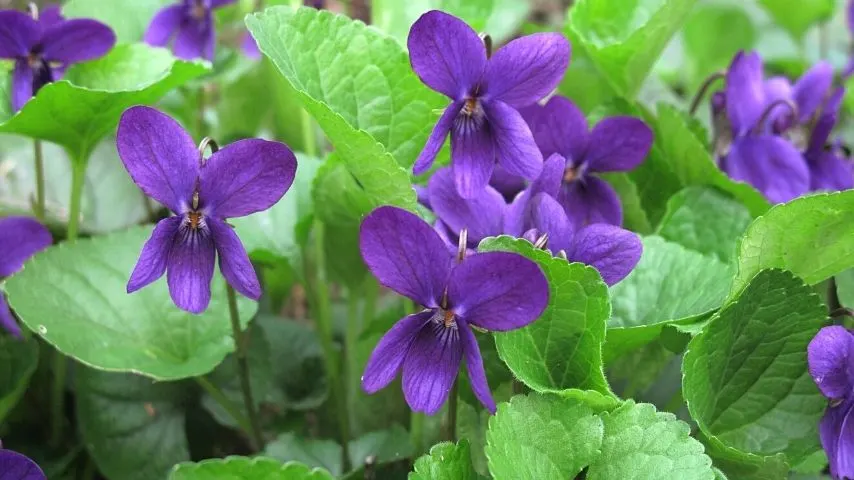
Viola is one of the plants you can grow in a hydroponics system that is both medicinal and edible
Viola is an edible and medicinal plant that can be grown in outdoor gardens or hydroponic systems.
Various species of Viola can be grown hydroponically by maintaining the internal and external environmental conditions.
- Scientific name: Viola
- Family: Violaceae
- Temperature: 40-70°F (5-20°C)
- Fertilizer: NPK fertilizer
- pH: 5.5-7.5
- Lighting: Artificial light
- Growth rate: Medium
- Humidity: Optimum humidity works best
29. Watercress
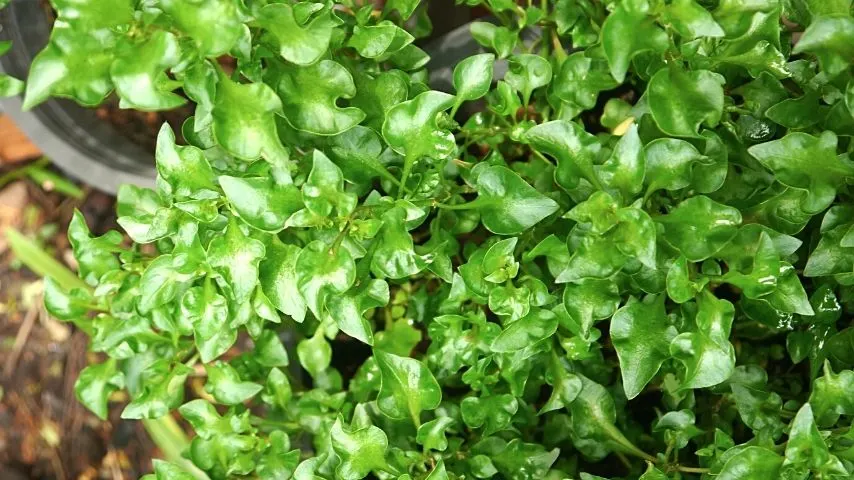
Watercress thrives in a hydroponics system as you can easily control the temperatures in it
Watercress is mostly grown hydroponically as the temperature-controlled environment of hydroponics boosts the growth of Watercress.
Moreover, Watercress prefers growing in an uncontaminated environment. For planting, ten to forty seeds can be planted in each pot and maintained with time.
- Scientific name: Nasturtium officinale
- Family: Brassicaceae
- Temperature: 77-86°F (25-30°C)
- Fertilizer: Kelp-based fertilizer
- pH: 5.0-7.0
- Lighting: 14-16 hrs. of artificial light
- Growth rate: Fast
- Humidity: 95-100%
30. Watermelon
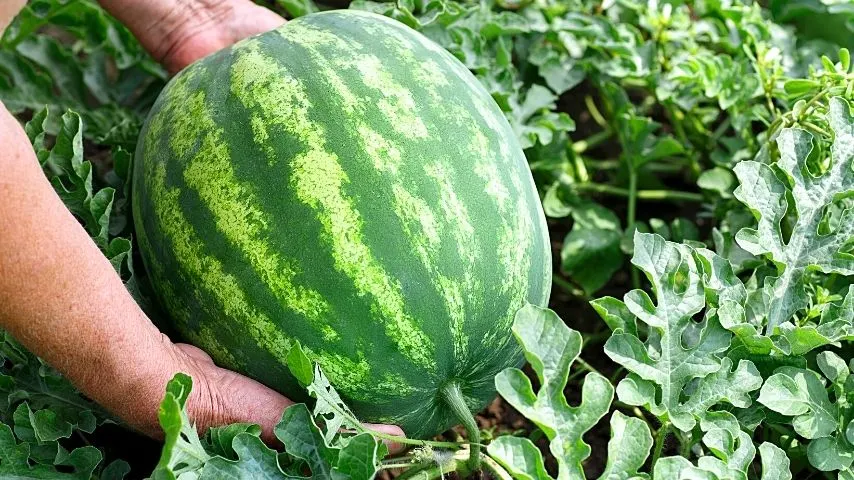
Watermelon is one of the plants that grow better when you plant it in a hydroponics system
Watermelon is consumed as a fruit everywhere in the world. It’s relatively easy and quick to grow Watermelon in hydroponics instead of organic soils.
However, for growing Watermelon via hydroponics, one needs to be built a durable shelving system that is capable of holding the weight of Watermelons.
Moreover, it is best to closely regulate required water and other conditions in the hydroponic system.
- Scientific name: Citrullus lanatus
- Family: Cucurbits
- Temperature: 77-86 °F (25-30°C)
- Fertilizer: General purpose fertilizers would be sufficient
- pH: 5.8-6.5
- Lighting: 14-16 hrs. of artificial light
- Growth rate: Fast
- Humidity: 60-80%
31. Zinnia
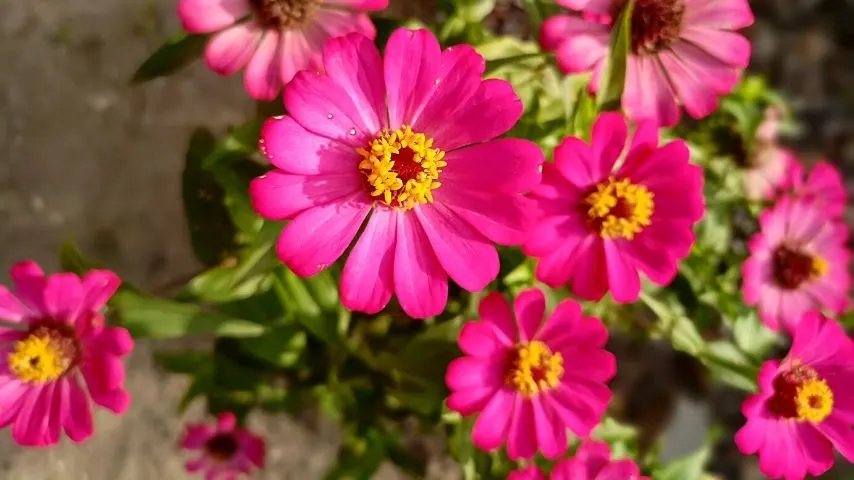
Zinnia can thrive in a hydroponics system if you ensure that it meets its moisture requirements
Zinnia is a lush green plant that encounters speedy growth when growing underbalanced environment.
It’s ideal for keeping Zinnia in a moist environment as overwatering can damage its delicate roots and stem system.
Zinnia is annual in nature and produces flowers during its blooming season. Various compact Zinnia varieties can be grown for indoor and outdoor planting purposes.
- Scientific name: Zinnia
- Family: Daisy’s family
- Temperature: 74-84°F (23-28°C)
- Fertilizer: 5-5-5 fertilizer
- pH: 6.5-7.0
- Lighting: 6 hrs. of sunlight or grow lights
- Growth rate: Fast
- Humidity: 45-85%
32. Snapdragon
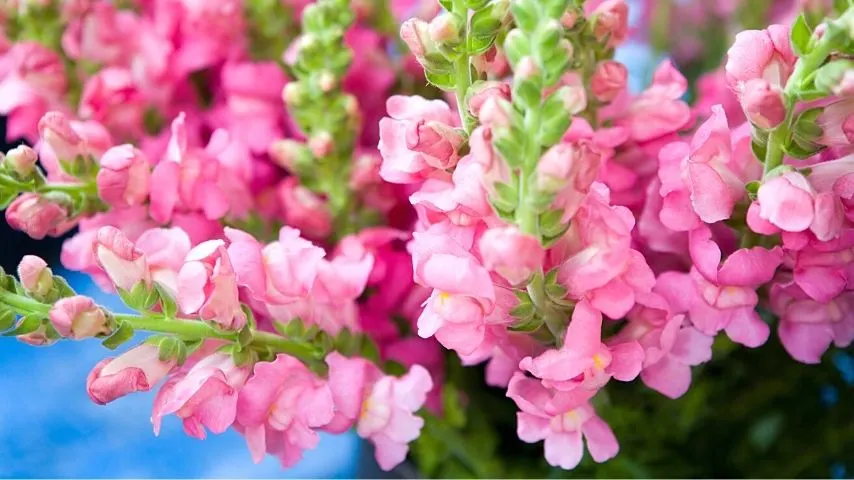
Snapdragons can grow in a hydroponics system well if you make sure to clean their container properly
Snapdragon requires ample water to grow properly. While growing hydroponic Snapdragon, caretakers need to keep cleaning the container timely.
Full sun to partially shaded gardens or outdoors can be the best location for growing Snapdragon.
- Scientific name: Antirrhinum
- Family: Plantains
- Temperature: 65-75°F (18-24°C)
- Fertilizer: 100% Perlite fertilizer
- pH: 6.2-7.0
- Lighting: 6 hrs. of sunlight or grow lights
- Growth rate: Fast
- Humidity: 50-60%
33. Sorrel
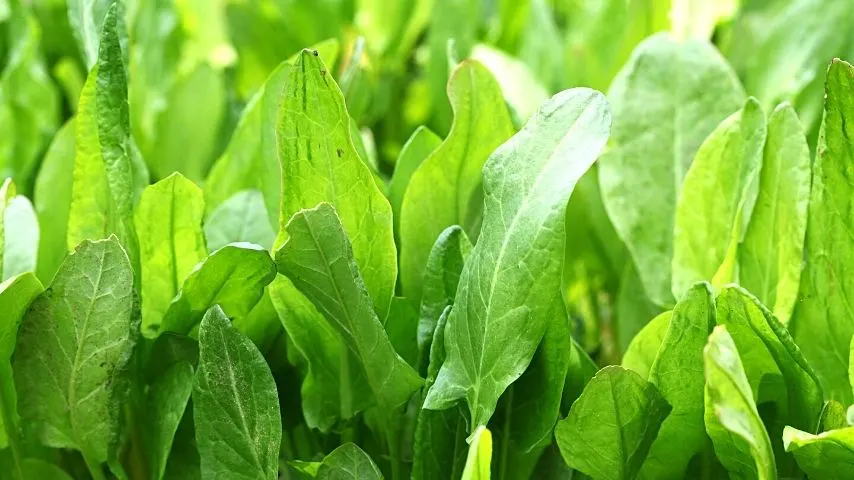
Like tomatoes, Sorrel can be grown with the help of Rockwool in a hydroponics system
Sorrels are perennial herbs belonging to the rich buckwheat family. Sorrel is mostly found in temperate regions, where humidity and temperature vary throughout the year.
Sorrel is grown with Rockwool in hydroponics as wool offers moisture retention, which is beneficial in the growth of Sorrel.
Sorrel can be grown both indoors and outdoors, in drastic light conditions.
- Scientific name: Rumex acetosa
- Family: Buckwheats
- Temperature: Around 70°F (24°C)
- Fertilizer: Hydroponic nutrient solution would be sufficient
- pH: 5.5-6.8
- Lighting: White LED lights of 5500k
- Growth rate: Moderate
- Humidity: 55-70%
34. Dahlias
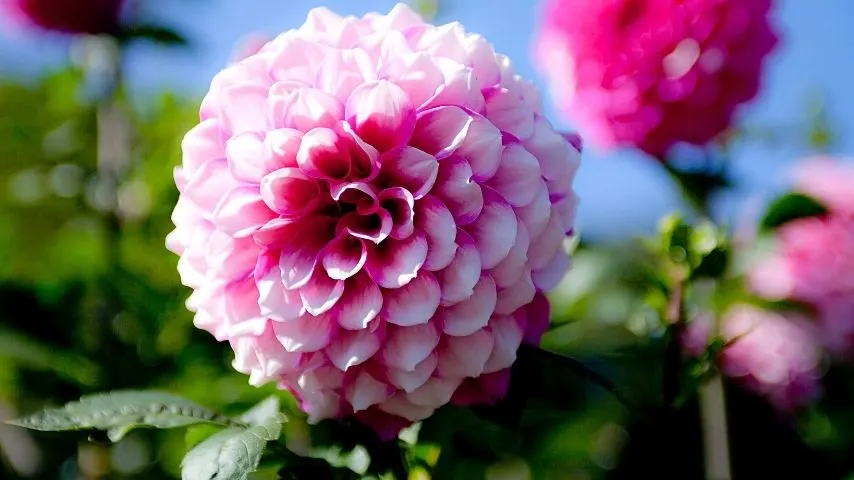
Dahlias need to receive constant light for it to thrive in a hydroponics system
In hydroponic solution, Dahlias require constant light to keep growing and blooming. Dahlias are usually planted during the early spring season to produce blooms and flowers.
However, it is essential to maintain a pH of 6.5-7.5 for optimal growth. It’s important to keep planting apparatus or medium moist and not soggy.
- Scientific name: Dahlia
- Family: Daisy family
- Temperature: Around 60-72°F (21-24°C)
- Fertilizer: Fertilizers rich in calcium and nutrients
- pH: 6.5-7.5
- Lighting: Constant warm light
- Growth rate: Slow
- Humidity: 45-85%
35. Dill
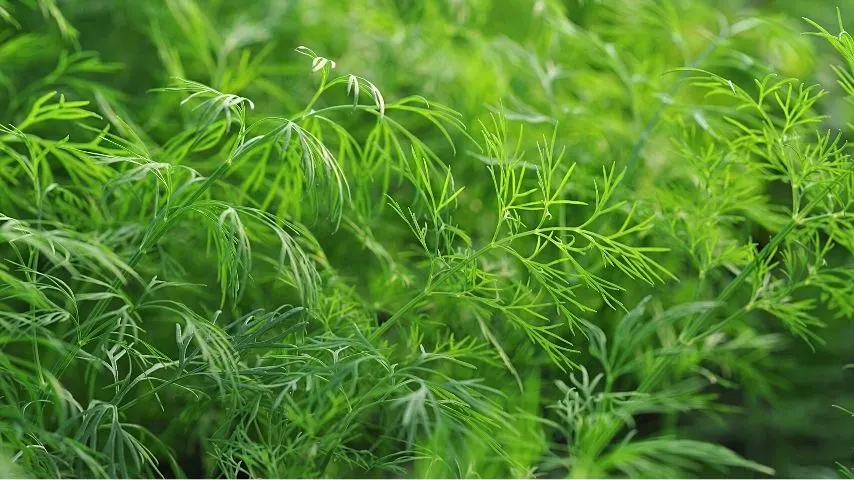
If you’re looking for another easy plant to grow in a hydroponics sytem, Dill is one of your best choices
Dill plant is considered the easiest to grow herb hydroponically. One can grow Dill in soil and then transplant it into a hydroponic setup for the starters.
Hydroponic cultivation boosts the overall strength of the Dill plant, adding value to the overall structure of Dill.
Dill is commonly used in the making of medicines and herbal products.
- Scientific name: Anethum graveolens
- Family: Umbellifers
- Temperature: Around 60-70°F (21-24°C)
- Fertilizer: Nitrogen and Phosphorus based fertilizers
- pH: 5.5-6.4
- Lighting: 12 hrs. of fluorescent light
- Growth rate: Moderate
- Humidity: Around 75%
36. Fiddle-Leaf Fig
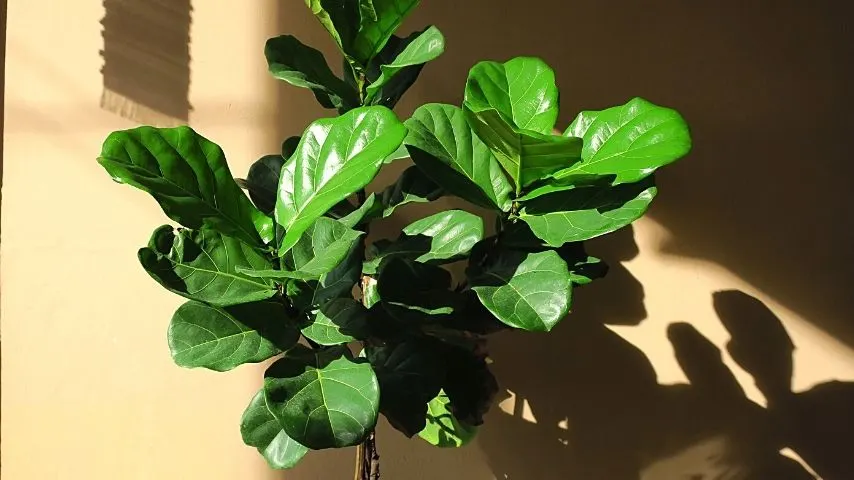
For Fiddle-Leaf Fig to grow well in a hydroponics system, make sure it has enough space to grow and receives the light and water requirements it needs
Fiddle-Leaf fig is adapted to indoor conditions where it can be placed throughout the year. Its roots are emersed in water pots or containers, providing an ideal growing condition.
Growing hydroponic Fiddle-Leaf fig might sound tricky, but it requires a spacious hydroponic system that provides ample water and light conditions to the growing Fiddle-Leaf fig.
- Scientific name: Ficus lyrata
- Family: Mulberry family
- Temperature: 60-75°F (16-24°C)
- Fertilizer: NPK fertilizer in the desired ratio
- pH: 5.5-6.5
- Lighting: Sunlight or artificial LED grow lights
- Growth rate: Moderate
- Humidity: Around 75-95%
37. Geranium
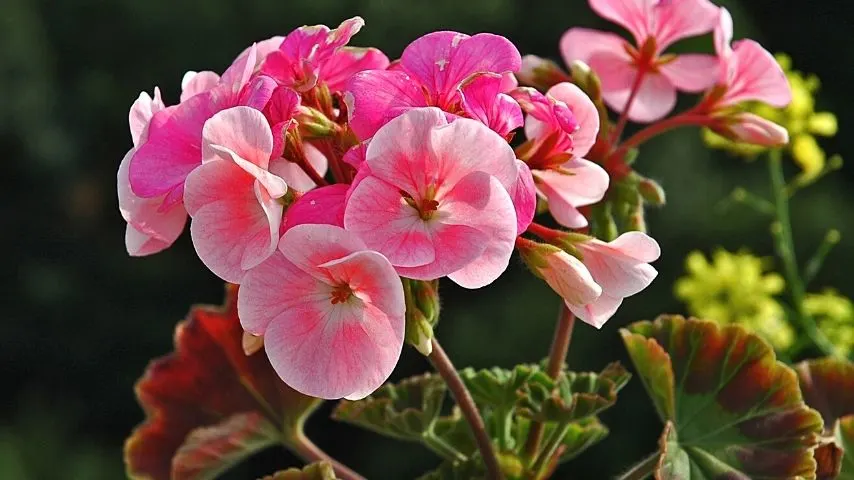
Geraniums are one of the plants that are adapted to thrive in a hydroponics system as you only need to submerge the end of its cuttings in water
Geraniums are best adapted for growing in water. After trimming the ends of the cuttings, the Geranium is placed in a jar or container with water.
It’s crucial to ensure that the water remains fresh and falling foliage doesn’t rot the water in the container.
Geraniums take around 4-5 weeks to root in water; however, it’s recommended to maintain an average temperature of 65-75 degrees Fahrenheit.
- Scientific name: Pelargonium
- Family: Geraniaceae
- Temperature: 72-80°F (22-26°C)
- Fertilizer: NPK fertilizer
- pH: Around 6.0
- Lighting: 14-16 hrs. of artificial light
- Growth rate: Moderate
- Humidity: Around 50-70%
38. Grapes
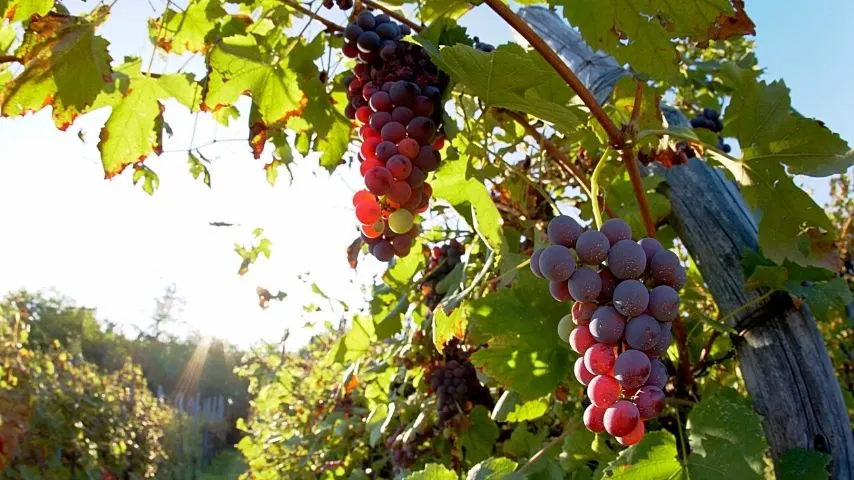
So long as the Grapes meets all the growth requirements it needs, it can thrive in a hydroponics system
To the surprise of many hobbyists and amateur gardeners, Grapes can also be grown in the hydroponic system.
However, it’s essential that the Grapes are provided with an ideal flow of nutrients throughout the growing period.
The culture of growing grapes in conventional soil types has been replaced with hydroponic systems. Hydroponic grapes taste better and have greater juice content and sweetness.
- Scientific name: Vitis
- Family: Grapes
- Temperature: 72-82°F (22-27°C)
- Fertilizer: High Potassium content fertilizers
- pH: Around 5.5-6.5
- Lighting: 14-16 hrs. of artificial light
- Growth rate: Moderate
- Humidity: Around 50-70%
39. Hoya
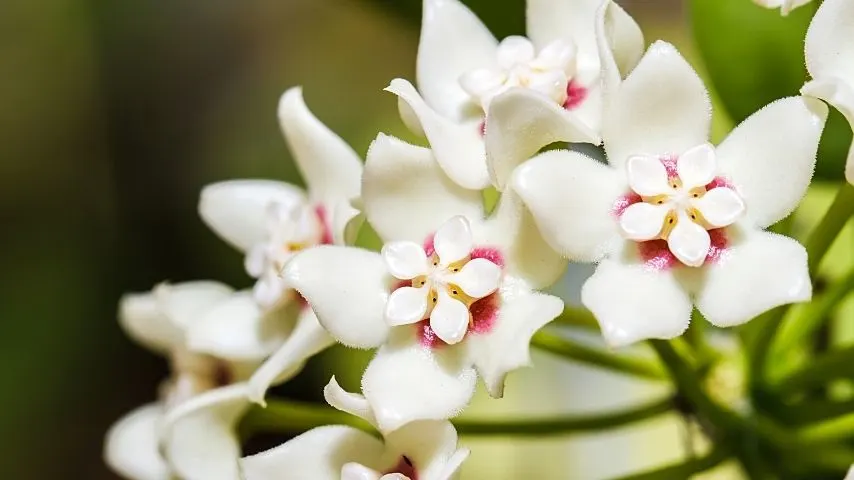
You can grow Hoya using hydroponics by ensuring to refuel it regularly with fresh water
Hoya doesn’t require any complicated farming techniques; it can start growing in a small glass of water.
However, it’s important to keep refueling fresh-water for better growth and development of the overall plant.
Using the hydroponic system for the Hoya plant would certainly improve the overall growth rate and development.
If you are looking to start with hydroponic Hoya, don’t forget to keep changing its water daily. Under the hydroponic system, the Hoya plant is provided with the right balance of oxygen and moisture.
- Scientific name: Hoya
- Family: Dogbanes
- Temperature: 60-80°F (15-26°C)
- Fertilizer: 2:1:2 or 3:1:2 fertilizer ratio is ideal with any food
- pH: Around 5.0-6.5
- Lighting: Medium or bright sunlight; otherwise, normally grow lights
- Growth rate: Moderate
- Humidity: 50-70%
40. Jade Plant
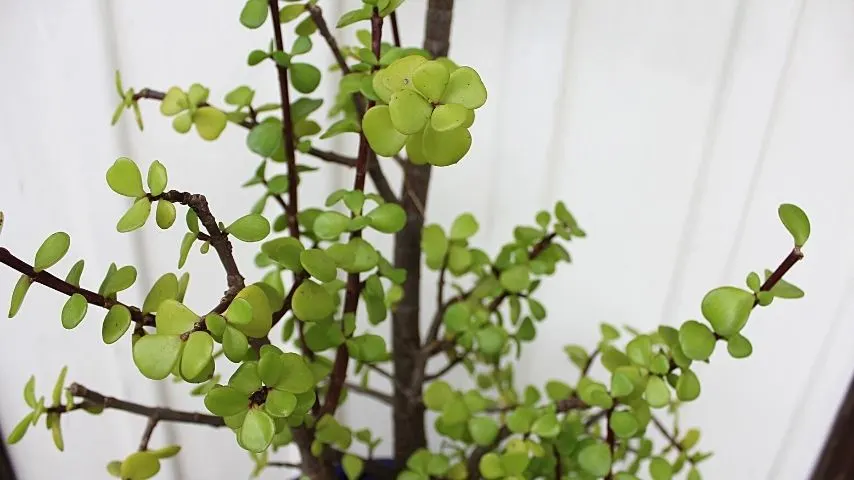
Jade Plants are adapated to growing in a hydroponics system as it roots can be immersed in 1-2 inches of water
Jade plants are adapted to high water content for their roots and stem systems in flowering pots and containers. Roots of Jade can be emersed up to 1-2 inches in freshwater.
Removal of leaves and damaged foliage is recommended as they disturb the natural water flow, affecting the overall development of the plant.
Rich nutrients and other substrates need to be provided for the growth of the Jade plant in a hydroponics system.
- Scientific name: Crassula ovata
- Family: Stonecrops
- Temperature: 65-70°F (18-21°C)
- Fertilizer: Nitrogen soluble fertilizers with a 10-20-10 ratio
- pH: Around 5.5-6.0
- Lighting: 4-6 hrs. of direct sunlight
- Growth rate: Fast
- Humidity: 45-85%
41. Kale
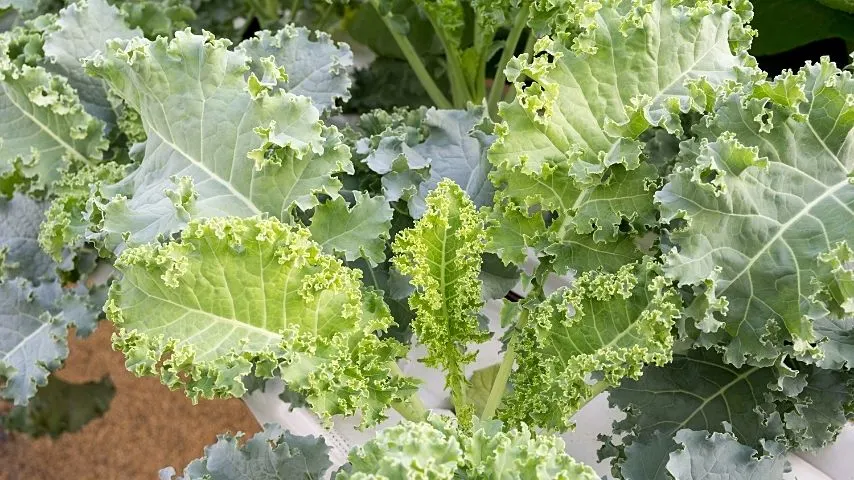
Plant Kale saplings at least 6 inches apart for them to thrive in a hydroponics system
Kale plants can be grown by planting fresh seeds to exchange the varieties among plants to produce a Kale like plant type.
If you are growing Kale in a hydroponic system, ensure to keep saplings at a distance of 6 inches minimum. Curly Kale or Scots Kale is among the most abundant Kale species grown hydroponically.
The Kale plant grows instantly when indoors, benefitting many commercial traders and farmers.
- Scientific name: Brassica oleracea var. sabellica
- Family: Brassicaceae
- Temperature: 45-85°F (7-29°C)
- Fertilizer: Nitrogen soluble fertilizers
- pH: Around 6.0
- Lighting: 6-10 hrs. of direct sunlight or LED grow lights
- Growth rate: Fast
- Humidity: 55-65%
42. Beans
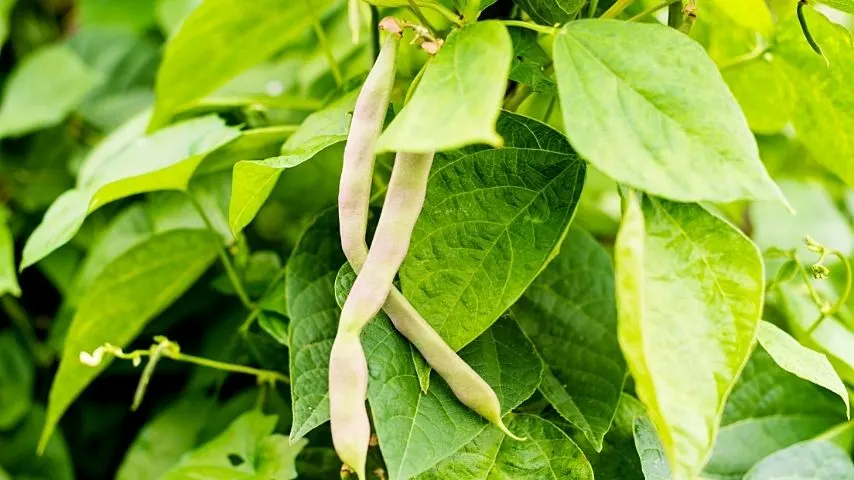
Beans thrive in a hydroponics system if you use clay pebbles and perlite as a cushion to the loose growing medium
Beans are among the most widely consumed crop around the globe. From typical salads to main courses, Beans are used almost everywhere while preparing food.
Growing hydroponic Beans might sound tricky or tough. However, to grow the best hydroponic Beans, one should try placing Bean seeds with clay pebbles and perlite to cushion the loose growing medium.
With hydroponics, one can grow up to one hundred varieties of high-yielding Beans. In a hydroponic system, Beans germinate within 1-2 weeks.
Beans require 12-13 hours of uninterrupted light, be it LED growing lights or warm sunlight.
- Scientific name: Phaseolus vulgaris
- Family: Legumes
- Temperature: 70-80°F (21-26°C)
- Fertilizer: Limited or small amounts of nutrients required
- pH: Around 6.0-6.5
- Lighting: 12 hrs. of direct sunlight or LED grow lights
- Growth rate: Fast
- Humidity: 75-85%
43. Blueberries
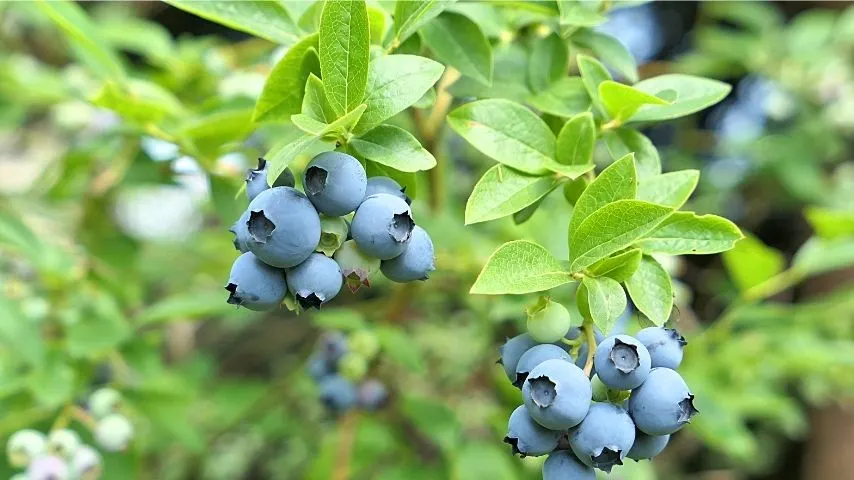
Blueberries grown in a hydroponics system experience an increase of yield up to 50%
Be it a Blueberry pie or Blueberry ice cream; Blueberries would always remain the favorite of many individuals.
Blueberries are widely grown on commercial farms to meet both the local and international market requirements.
Using hydroponic methods for growing Blueberries can improve their yielding up to 50%, depending upon the variety.
While growing Blueberries, one should always focus on watering. Blueberries grown via hydroponics are much better than those which are grown in soil using conventional methods.
The Blueberry plant requires at least 6 hours of sunlight initially.
- Scientific name: Vaccinium sect. Cyanococcus
- Family: Heaths
- Temperature: 72-75°F (20-24°C)
- Fertilizer: Acid-base balanced fertilizers
- pH: Around 4.5-5.8
- Lighting: 12-16 hrs. of direct sunlight are ideal
- Growth rate: Fast
- Humidity: Around 70%
44. Borage
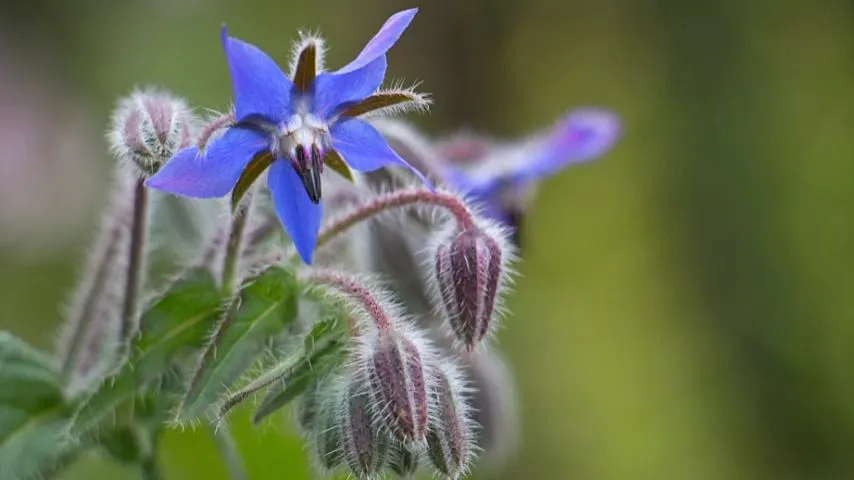
So long as you use a deep water hydroponics system for Borage, it is sure to thrive
Borage is an interactive and versatile plant that prefers staying indoors during the frost. Borage plant seeds require a cold temperature to germinate in order to produce exceptional flowers and foliage.
Borages can also be grown in wide bottom containers having a 12-inch depth for long roots.
Borage doesn’t survive in extremely cold weather as it’s a perennial plant.
A deep water system in hydroponics would be suitable for growing Borage, as its taproots need space towards the bottom of any container.
- Scientific name: Borago officinalis
- Family: Boraginaceae
- Temperature: 50-75°F (10-23°C)
- Fertilizer: potassium-based fertilizer is recommended
- pH: Around 4.5-8.5
- Lighting: 14-16 hrs. of direct sunlight are ideal
- Growth rate: Fast
- Humidity: Around 55-70%
45. Cabbage
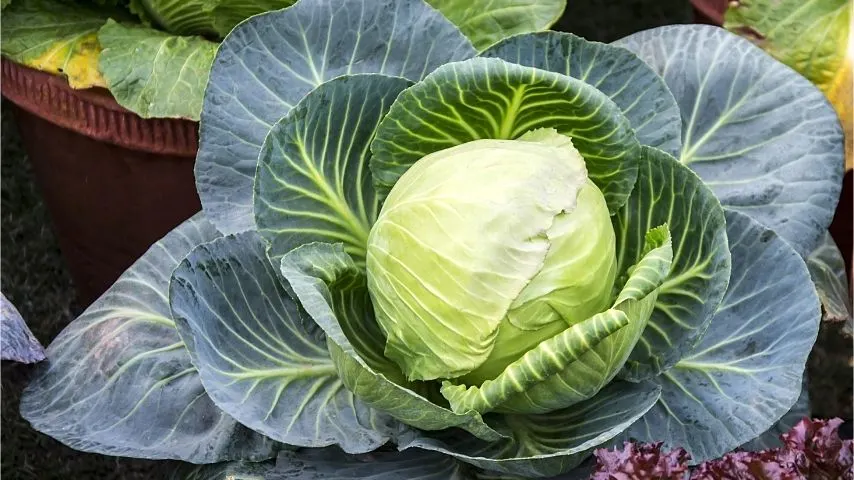
Cabbage is one of the plants that you can easily grow and maintain in a hydroponics system
Cabbage is widely grown in large fields all over the globe. Talking about hydroponic Cabbage, it’s quite easy to grow and maintain.
However, pest control measures need to be implemented to keep Cabbage secure from unwanted pests and bacteria.
Cabbages can be planted in a relatively small area using a hydroponic system, reducing the hassle for farmers in the field.
Within 3-4 days of the plantation, the Cabbage plant starts to develop roots and leaves, which are to be carefully monitored till the time of cultivation.
- Scientific name: Brassica oleracea var. capitata
- Family: Brassicaceae
- Temperature: 65-75°F (18-24°C)
- Fertilizer: EC for Cabbage
- pH: Around 6.2-6.6
- Lighting: LED or fluorescent grow lights
- Growth rate: Fast
- Humidity: 40-70% relative humidity
46. Carnations
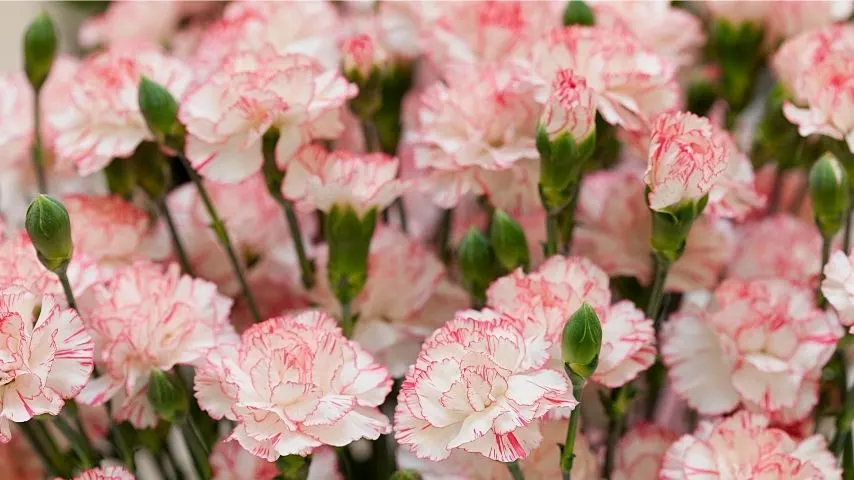
Carnations, as flowering plants, need to meet its growth requirements for it to thrive in a hydroponics system
Carnations are also known as Dianthus caryophyllus, which are among the famous flowering perennials known for their beautiful and elegant blooming flowers.
After cutting and trimming the stem, Carnations can be dipped in water, exposing roots to hormones and nutrients in a flowering pot or hydroponics solution.
Various hydroponic systems can be used for growing carnations; as they are flowering plants, they need specific light intensities, temperatures, and other growing conditions.
- Scientific name: Dianthus caryophyllus
- Family: Pinks
- Temperature: 65-75°F (18-24°C)
- Fertilizer: Mild nutrient solution can be provided
- pH: Around 6.0
- Lighting: 5-8 hrs. of sunlight or fluorescent grow lights
- Growth rate: Fast
- Humidity: 60-70% relative humidity
47. Catnip
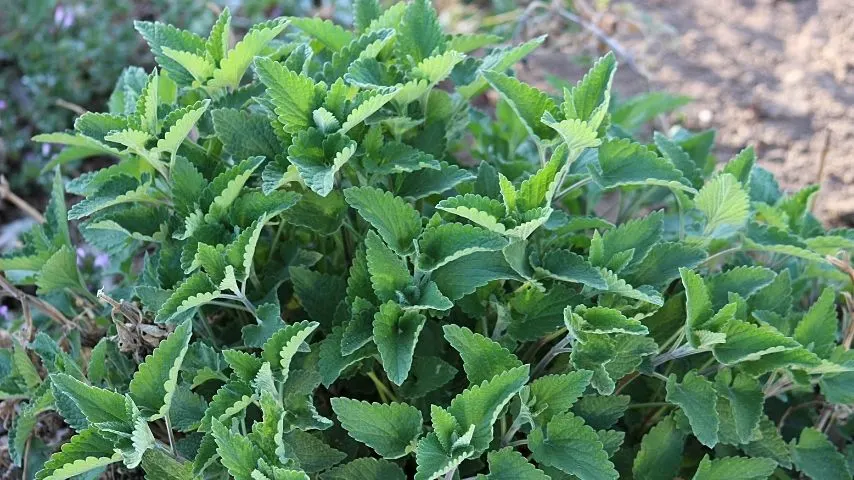
Catnip is one of the plants that grow well in a hydroponics system as its structure and aroma elevates
Catnip plants can be grown outdoors or indoors depending on sunlight, shade, and other environmental requirements.
Catnip is also grown in containers or small plant pots, depending upon space and other parameters.
However, it is observed that growing Catnip via hydroponics technique elevates the overall structure and aroma of the plant.
Talking about electrical conductivity in a hydroponic system for Catnips, they prefer 1-1.6 levels of electrical conductivity.
Moreover, the dilute salts need to be around 800-1200 ppm, making it an ideal setup for growing Catnip hydroponically.
- Scientific name: Nepeta cataria
- Family: Mints
- Temperature: 65-75°F (18-24°C)
- Fertilizer: Nutrient-rich solution would be ideal
- pH: Around 5.5-6.7
- Lighting: Bright sunlight or grow lights
- Growth rate: Fast
- Humidity: Average humidity levels
48. Chamomile
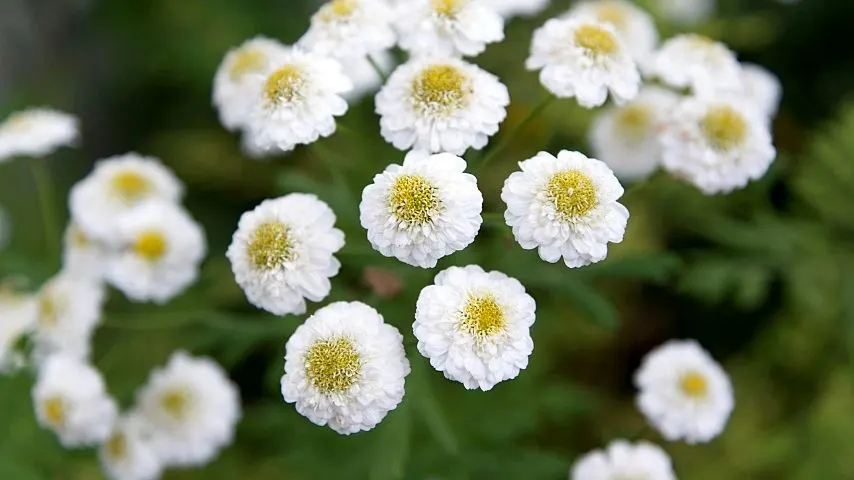
Chamomile can thrive in a hydroponics system so long as its environment is controlled properly
Chamomile is an attractive flowering plant that certainly adds beauty to contemporary gardens and fields.
Chamomile suits best with Southern climates; however, with the hydroponics method, Chamomile can be grown in a controlled environment.
Chamomile plant quickly gets accustomed to the hydroponics system and grows extremely well.
- Scientific name: Matricaria chamomilla
- Family: Daisy’s family
- Temperature: 66-86°F (19-30°C)
- Fertilizer: NPK fertilizers
- pH: Around 7.0-7.5
- Lighting: HID grow lamp or T5 fluorescent
- Growth rate: Fast
- Humidity: Constant moisture required
49. Chervil
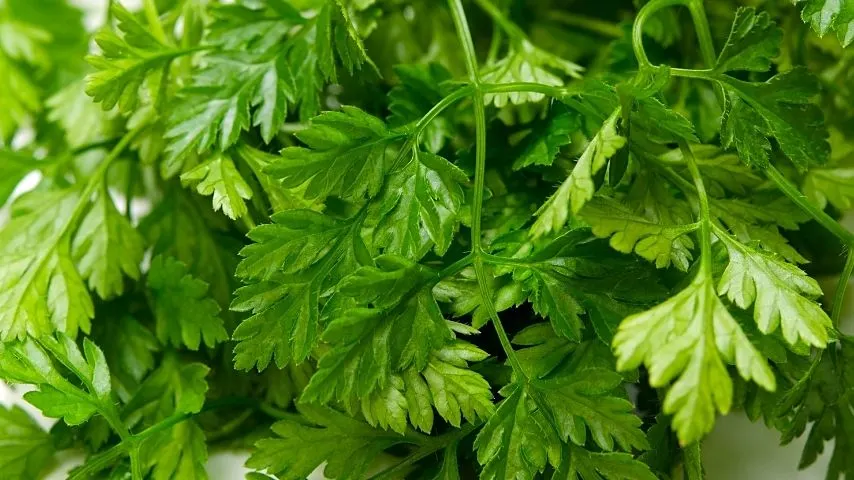
Chervil is one of the medicinal and edible herbs that is primarily grown indoors using a hydroponics system
Chervil is considered a delicate and special naturally occurring herb used in medicines and various recipes. Chervil is mainly grown indoors with hydroponic systems.
Seeds of Chervil can’t be easily transplanted, so it’s recommended to grow Chervil in a feasible environment.
It’s important to provide a moist environment to Chervil for continuous growth and development.
- Scientific name: Anthriscus cerefolium
- Family: Umbellifers
- Temperature: 60-75°F (15-23°C)
- Fertilizer: Hydroponic nutrient solution
- pH: Around 5.5-6.0
- Lighting: Bright sunlight
- Growth rate: Fast
- Humidity: 55-85%
50. Orchids
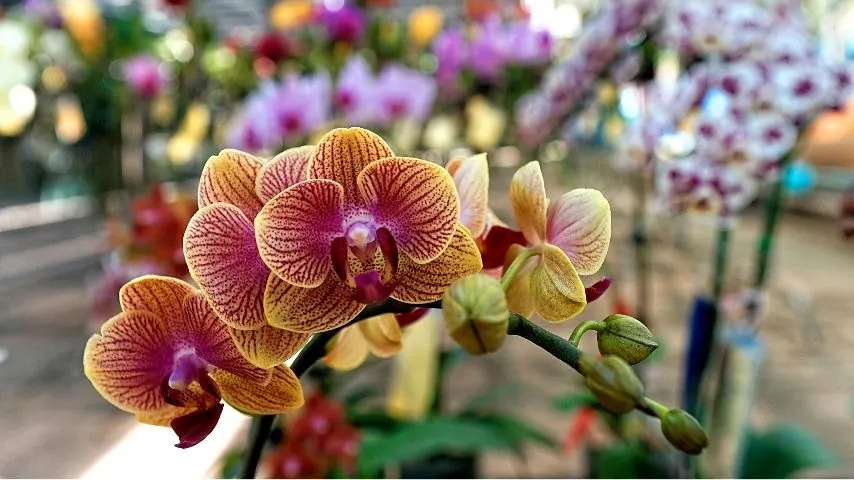
Orchids can grow both in an indoor and outdoor environment using the hydroponics system
A wide variety of hydroponic Orchids are grown across many indoor and outdoor gardens and flowering fields.
It’s important to grow Orchids using inert materials such as gravel, clay pebbles, charcoal, Rockwool, and perlite.
The capillary action uptakes nutrients and dissolved minerals from the water to the roots of Orchids.
With state-of-the-art hydroponic systems, one can enjoy growing vivid Orchids in their indoor hydroponic gardens.
- Scientific name: Orchidaceae
- Family: Orchidaceae
- Temperature: 65-78°F (18-26°C)
- Fertilizer: Nutrient solution comprising Hydrogen, Oxygen, and Carbon
- pH: Around 5.8
- Lighting: 400w high-pressure sodium or metal halide light is ideal
- Growth rate: Fast
- Humidity: 40-80%
51. Petunias
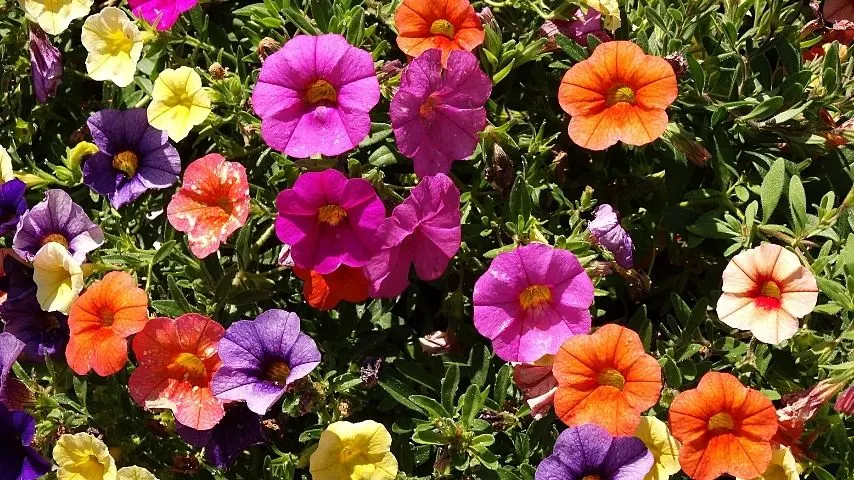
For Petunias to thrive in a hydroponics environment, it needs to receive 5-6 hours of sunlight
Petunias blossoms are fairly pinkish, creating a striking and vibrant difference on green plants in outdoor gardens.
Hydroponic Petunias need at least 5 to 6 hours of bright sunlight to grow to their best ability.
Moreover, it’s recommended to use a balanced mix of 8-8-8, 10-10-10, or 12-12-12 liquid-based fertilizers for better growth and development.
The desired pH values should be around 6.0 to 7.0.
- Scientific name: Petunia
- Family: Nightshade
- Temperature: 60-85°F (15-30°C)
- Fertilizer: Balanced liquid-based fertilizer
- pH: Around 6.0-7.0
- Lighting: 5-6 hrs. of bright sunlight
- Growth rate: Fast
- Humidity: 75-85%
52. Radishes
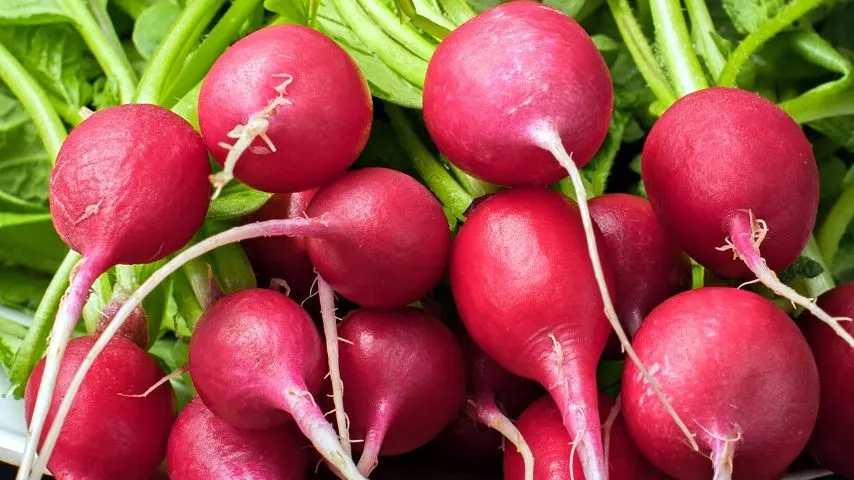
The hydroponics system is a more economical and efficient way of growing Radishes
Hydroponic Radishes are typically planted for keeping insects and pests at bay. Using hydroponic systems for growing Radishes turns out to be economical and more efficient.
During hydroponics, 80% of seeds germinate, which is quite higher than the rate of germination in typical soils.
Radishes need to be provided with ideal growing conditions in hydroponics systems, which include a pH of 6-7 and a temperature ranging from about 50-85 degrees Fahrenheit (10-30°C).
- Scientific name: Raphanus sativus
- Family: Brassicaceae
- Temperature: 50-85°F (10-30°C)
- Fertilizer: NPK fertilizers
- pH: Around 6.0-7.0
- Lighting: 5-6 hrs. of adequate sunlight
- Growth rate: Fast
- Humidity: Optimum humidity is ideal
53. Rex Begonias
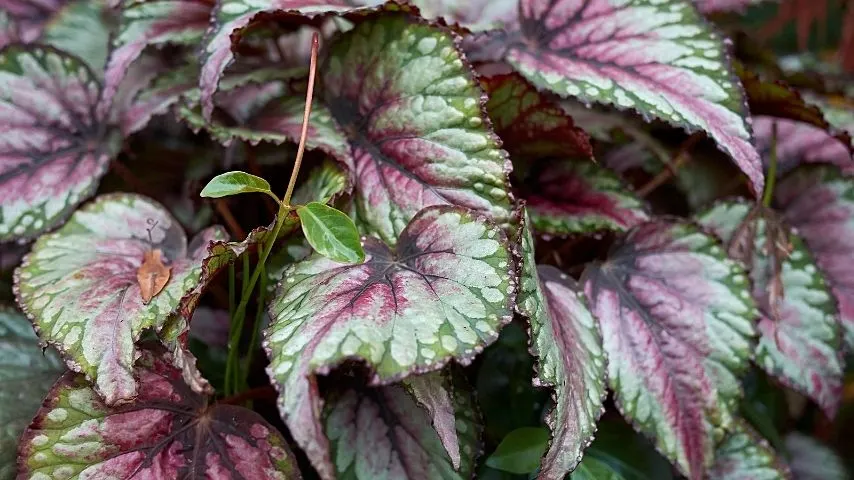
For Rex Begonias to grow properly in a hydroponics system, ensure to maintain the water’s pH and temperature
Rex Begonias offers thick fibrous leaves and foliage. Their eye-catching flowers in reddish-pink shade catch the attention of every flower lover passing by.
Rex Begonias are typically accustomed to damp and tropical conditions, where they achieve very little light.
While growing Rex Begonias in the hydroponic system, one should maintain its pH levels and temperatures.
- Scientific name: Begonia rex
- Family: Begoniaceae
- Temperature: 60-85°F (15.5-29.4°C)
- Fertilizer: Hydroponic fertilizer would be sufficient
- pH: Around 5.7-6.2
- Lighting: Adequate fluorescent lighting
- Growth rate: Fast
- Humidity: 80-85%
54. Inchplant
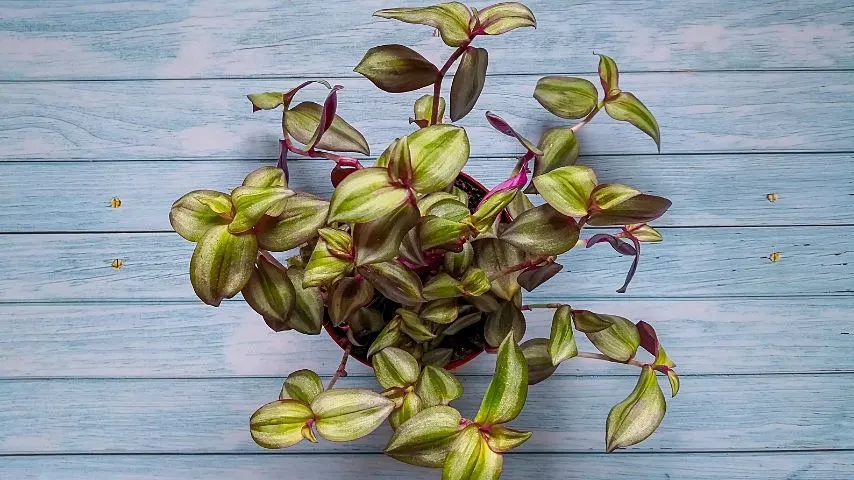
Inchplant is one of the plants that’s best adapted and will surely thrive in a hydroponics system
Inchplant, known as Tradescantia zebrina, is native to southern Mexico and its neighboring areas. Inchplant is classified as annuals, making it slightly prone to freezing weather.
The plant has the ability to grow about twelve inches, depending upon the varieties and other environmental factors.
The roots of Inchplant are trimmed first and then emerge in water. Inchplant grows exceptionally well when grown in a hydroponics system.
- Scientific name: Tradescantia zebrina
- Family: Spiderworts
- Temperature: 72-82°F (22-27°C)
- Fertilizer: NPK with water is recommended
- pH: Around 5.5-6
- Lighting: 4-8 hrs. of sunlight or fluorescent lighting
- Growth rate: Fast
- Humidity: 50-60%
55. Lavender
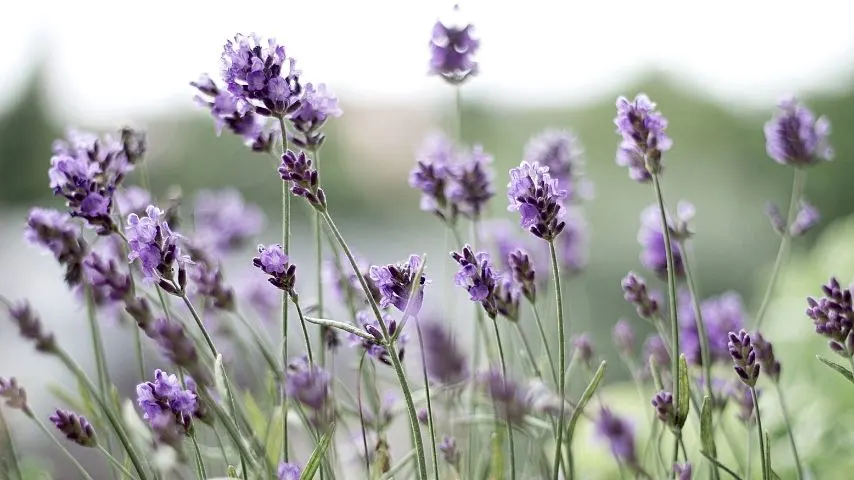
Lavender experiences a 30% boost in growth when you plant them in a hydroponics system
If you are a gardener or a hobbyist, you would know the importance of having Lavender planted in your garden or fields.
Lavender has the ability to withstand controlled temperatures and other settings in hydroponic systems. Moreover, the hydroponic Lavender grows 30% faster than soil-grown ones.
Lavender has an appealing fragrance that attracts bees and butterflies to gardens and open spaces.
- Scientific name: Lavandula
- Family: Mints
- Temperature: 70-75°F (20-24°C)
- Fertilizer: Nutrient enriched fertilizer
- pH: Around 6.4-6.8
- Lighting: At least 6 hrs. of bright sunlight or grow lights
- Growth rate: Fast
- Humidity: 40-60%
56. Cilantro
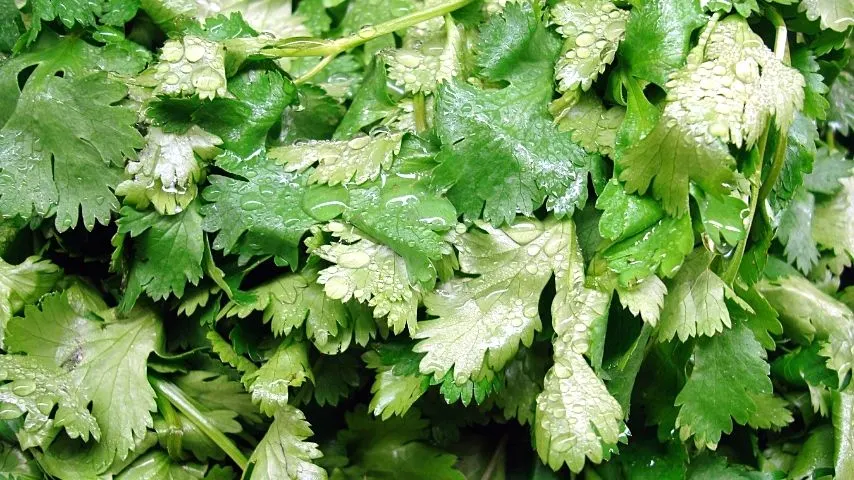
Cilantro needs to be kept above the uniform water level for it to thrive in a hydroponics system
Cilantro is best situated in a winter hydroponics garden, where it enjoys cool temperatures. Cilantro is adapted to ten to twelve hours of sunlight every day for optimum growth and development.
While placing Cilantro in hydroponic systems, one should ensure to keep it above the uniform water level.
- Scientific name: Coriandrum sativum
- Family: Umbellifers
- Temperature: 70-75°F (20-24°C)
- Fertilizer: Balanced amount of NPK fertilizer
- pH: Around 6-6.8
- Lighting: Fluorescent lighting is recommended
- Growth rate: Fast
- Humidity: Optimum relative humidity
57. Carrots
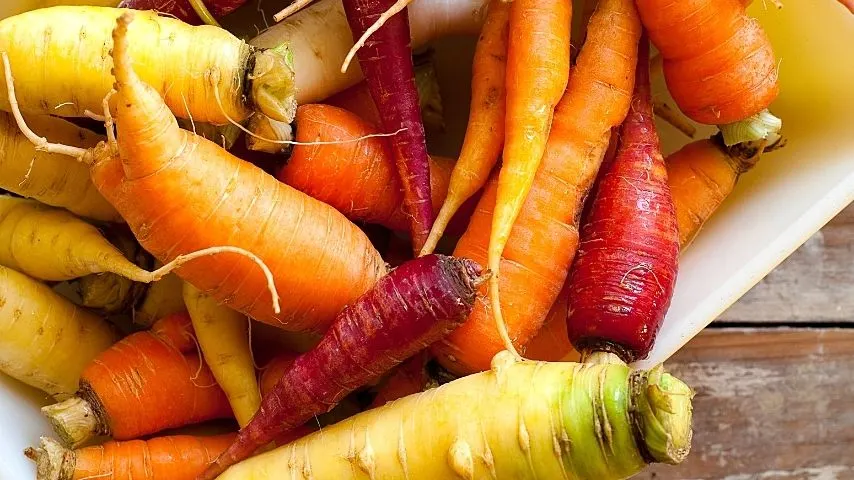
Carrots can be quite tricky to grow in a hydroponics system
Carrots can also be grown in hydroponic gardens, but they are a little tricky to manage and look after.
Carrots grow from roots, so a little support and attention are needed to hold their roots tight.
The supply of carrots is now available during winters, as they can be grown throughout winters in hydroponic gardens.
- Scientific name: Daucus carota
- Family: Daucus
- Temperature: 68-91°F (20-33°C)
- Fertilizer: Water-soluble fertilizer
- pH: Around 6.3-7.5
- Lighting: 12-16 hrs. of light and 8-12 hrs. of darkness daily
- Growth rate: Fast
- Humidity: 40-70% relative humidity
58. Broccoli
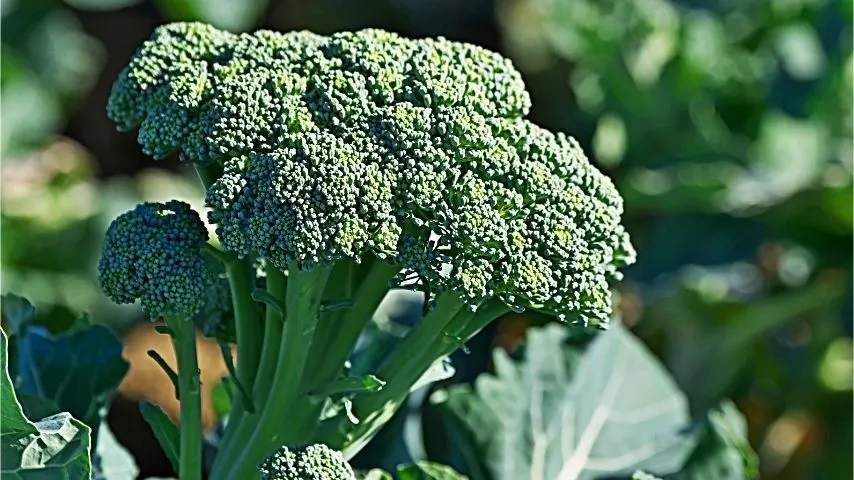
Broccoli is one of the easiest vegetables to grow in a hydroponics system
Broccoli is an easy vegetable plant to grow in a hydroponic system as it can be grown throughout the year. Broccoli grows at a very decent pace and will be ready for harvest in a span of months.
With a hydroponics system, commercial farming for Broccoli is made easier.
Grow lights need to be placed at a certain distance from growing Broccoli as artificial grow lights can increase the system’s internal temperature.
- Scientific name: Brassica oleracea var. italica
- Family: Brassicaceae
- Temperature: 65-80°F (18-27°C)
- Fertilizer: Water-soluble fertilizer
- pH: Around 6.3-7.5
- Lighting: LED grow lights
- Growth rate: Fast
- Humidity: Optimum relative humidity
59. Lemongrass
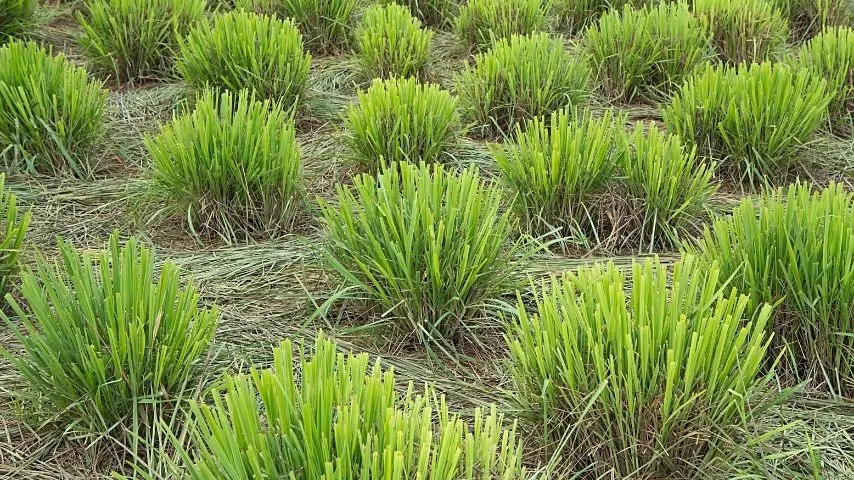
Lemongrass grows fast in a hydroponics system as its seeds germinate within 3-5 days
Lemongrass is a medically proven plant that is used to make medicines for treating headaches, high blood pressure, vomiting, cough, and many other symptoms.
Under hydroponic conditions, lemongrass grows rapidly, as its seeds start to germinate within three to five days.
Sterile root cubes should be used as a growth medium while growing hydroponic lemongrass.
- Scientific name: Cymbopogon
- Family: Grasses
- Temperature: 72-95°F (22-35°C)
- Fertilizer: NPK, Calcium, and Magnesium based fertilizers
- pH: 5.5-6.4
- Lighting: up to 6 hrs. of sunlight or LED grow lights
- Growth rate: Fast
- Humidity: Above 80%
60. Hydroponic Artichoke
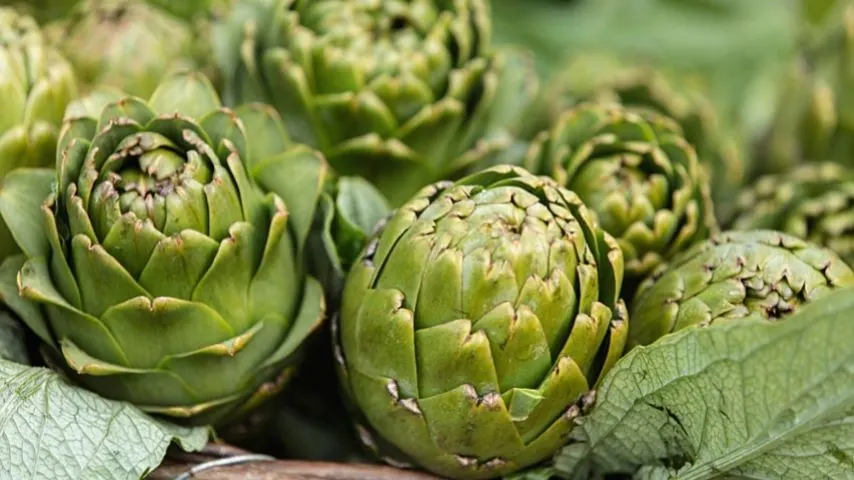
You can grow Hydroponic Artichoke if you ensure to control the environment and provide the nutrients it needs
Hydroponic Artichoke grows in nutrient-rich solution and under a controlled environment. They require twelve to fourteen hours of sunlight and ideal growing conditions.
Moreover, the pH levels need to maintain throughout the growing procedure of Artichoke.
- Scientific name: Cynara cardunculus
- Family: Daisy’s family
- Temperature: 70-75°F (21-23°C)
- Fertilizer: NPK fertilizer is ideal
- pH: 6.5-7.5
- Lighting: Full sun or slight shade throughout the day
- Growth rate: Fast
- Humidity: Optimum humidity rate for balanced growth
Conclusion
With the growing demand for many seasoned plants and their species, hydroponics is used around the globe to produce vegetables, fruits, and herbs irrespective of their planting or growing season.
Hydroponics is certainly the future of commercial farming, from which millions of businesses and individuals can benefit.
From the above-mentioned plants for hydroponics, one can start their own hydroponics garden in their backyard.

Daniel has been a plant enthusiast for over 20 years. He owns hundreds of houseplants and prepares for the chili growing seasons yearly with great anticipation. His favorite plants are plant species in the Araceae family, such as Monstera, Philodendron, and Anthurium. He also loves gardening and is growing hot peppers, tomatoes, and many more vegetables.

![60 Best Plants for Hydroponics – Top List [2024]](https://plantophiles.com/wp-content/uploads/2022/04/60-Best-Plants-for-Hydroponics-720x405.jpg.webp)
